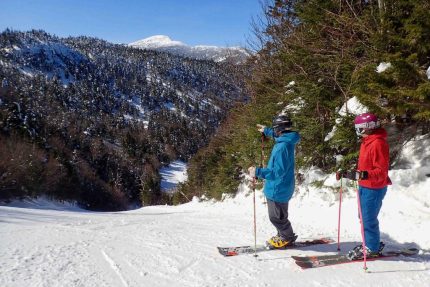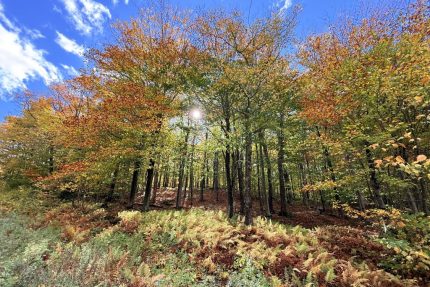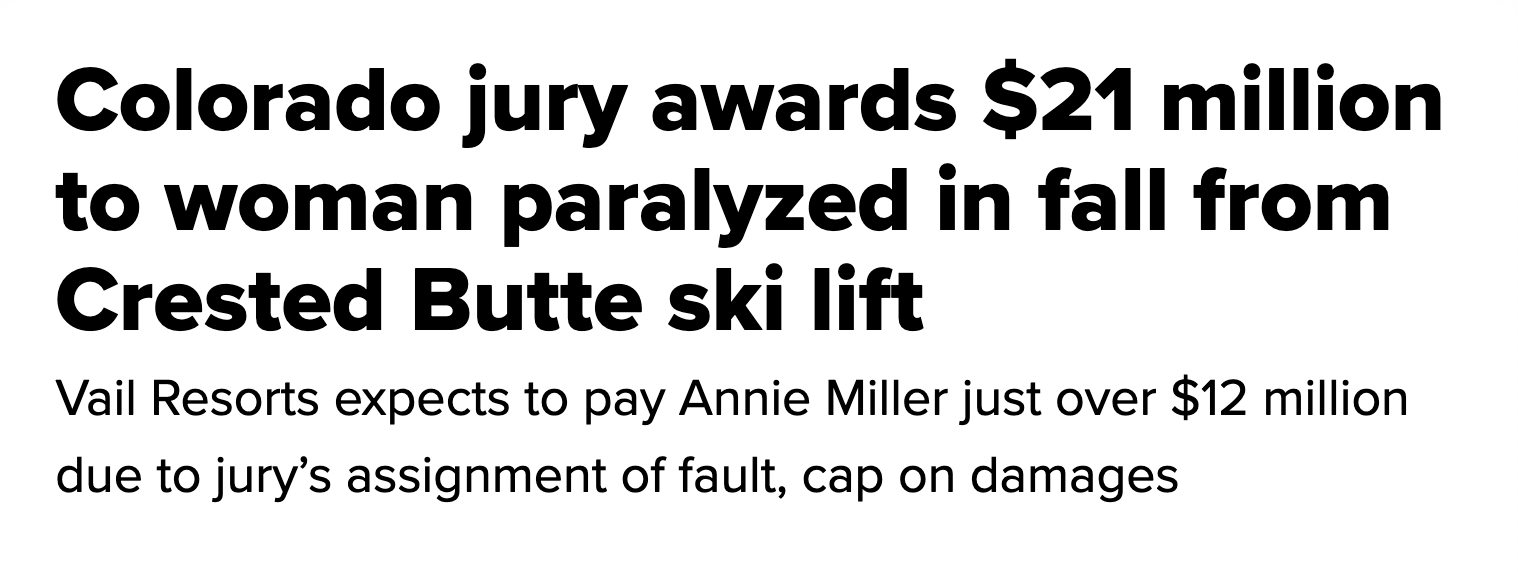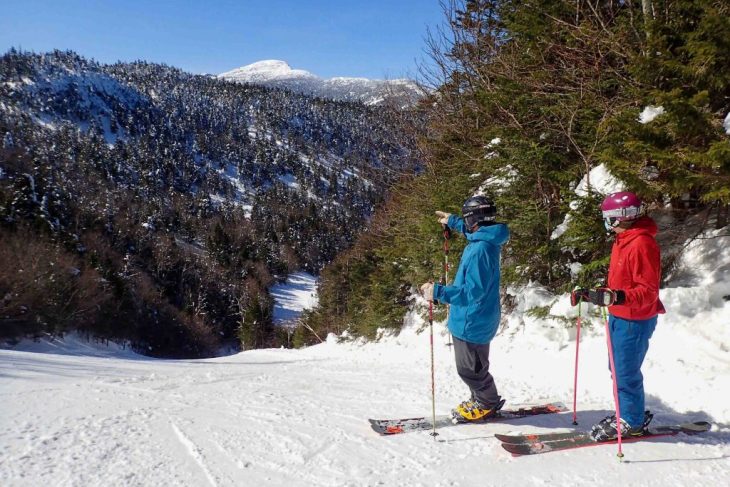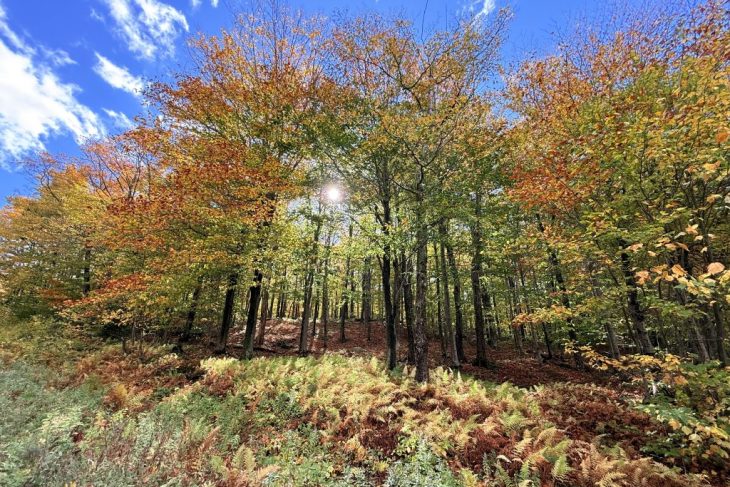Gearing Up for Snow
As the chill creeps into the air and the trees are almost done showing off their colors, our Mountain Ops team is already in winter mode. Brush cutting is underway, lifts are getting prepped, and snowmaking systems are nearing go-time. It’s quiet on the mountain—but […]
Views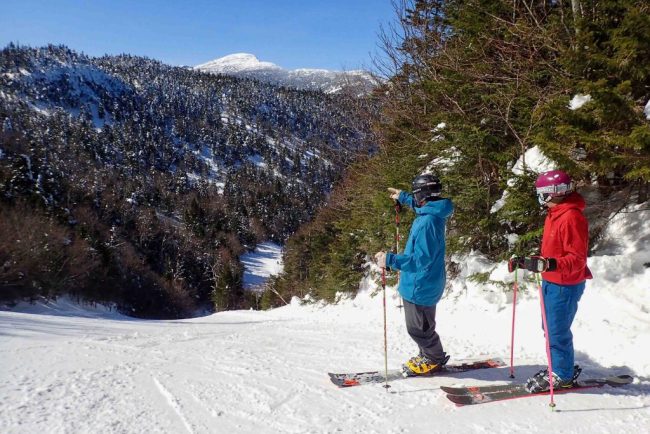
Voting is Live! Vote Now, Vote Often
Hey Smugglers! Help us become one of the Ten Best for USA TODAY. Smuggs is currently nominated in two categories – Best Ski Resort and Best Ski School. Please visit online and vote! Voting is live now and will be open for the next four […]
Views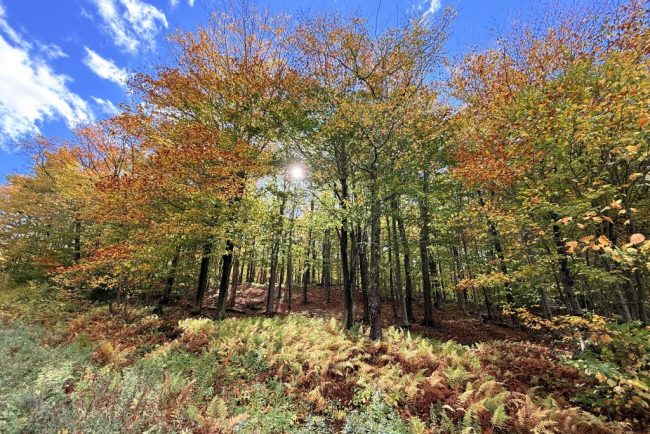
Good, Better, Best
Foliage Report:Good news, it’s still happening. Better news, the recently littered leaves on the ground have added another layer of foliage splendor. The best news, Smuggs is positioned right in the heart of it all. We are looking forward to having all of you here […]
Views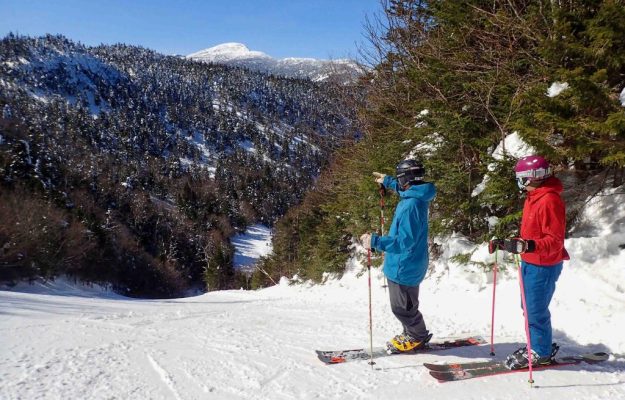
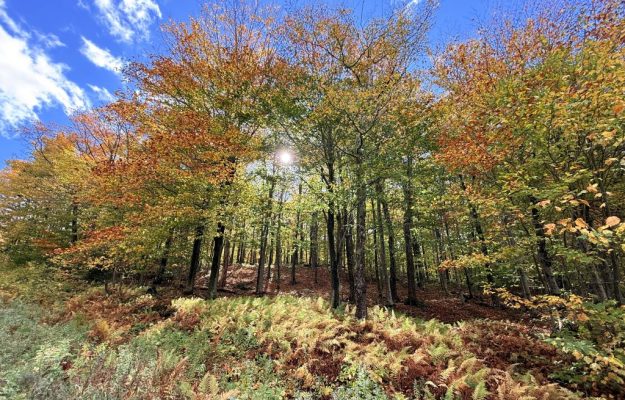
Gearing Up for Snow
As the chill creeps into the air and the trees are almost done showing off their colors, our Mountain Ops team is already in winter mode. Brush cutting is underway, lifts are getting prepped, and snowmaking systems are nearing go-time. It’s quiet on the mountain—but […]
ViewsAs the chill creeps into the air and the trees are almost done showing off their colors, our Mountain Ops team is already in winter mode. Brush cutting is underway, lifts are getting prepped, and snowmaking systems are nearing go-time. It’s quiet on the mountain—but behind the scenes, we’re full speed ahead. We will be ready to roll as soon as the temperatures drop.
A Smarter Way to Make Snow: The Snowright System
This summer, we mapped every dip and curve of our trails to feed into the Snowright System—our high-tech tool that helps us make snow where it’s needed. That means better coverage, longer-lasting snow, and smarter use of water and energy.
New Season, New Snowcat
And just when you thought we couldn’t get more excited—we’ve got a brand-new snowcat arriving this fall. Ready to carve out perfect corduroy and keep things buttery-smooth for skiers and riders of all ages, it’s our latest investment in making your mountain experience the best it can be.
A Few More Things…
Want to Work Where You Play? Join Our Crew
None of this happens without the people who bring it all to life. Our winter crew—snowmakers, lift attendants, childcare heroes, food & beverage pros, rental shop wizards, and more—are the heartbeat of Smuggs during ski season. And right now, we’re hiring. Whether you’re a local Vermonter, a student looking for an adventurous break, or someone seeking a seasonal lifestyle shift, there’s a place for you here. Flexible schedules, ski and ride perks, and the chance to help create unforgettable family memories—it’s more than a job. It’s becoming part of something real. Want to be part of it? smuggs.com/employment
Don’t Miss: Halloween Boo Bash + Pass Deadline
A quick reminder! Our Halloween Boo Bash is just around the corner—don’t miss this spook-tacular family event: smuggs.com/event/halloween-boo-bash 
Season Pass & Bash Badge
If you haven’t picked up your Pass yet, the Halloween Deadline is fast approaching. Lock in those perks and get ready to make the most of the season ahead.
 Vote for Smuggs!
Vote for Smuggs!
We’re nominated for Best Ski Resort and Best Ski School in the USA TODAY 10 Best Awards. You can vote once per day, now through November. Show us your #smuggslove by voting today!
The post Gearing Up for Snow appeared first on Smugglers’ Notch Resort Vermont.

Voting is Live! Vote Now, Vote Often
Hey Smugglers! Help us become one of the Ten Best for USA TODAY. Smuggs is currently nominated in two categories – Best Ski Resort and Best Ski School. Please visit online and vote! Voting is live now and will be open for the next four […]
ViewsHey Smugglers! Help us become one of the Ten Best for USA TODAY. Smuggs is currently nominated in two categories – Best Ski Resort and Best Ski School. Please visit online and vote! Voting is live now and will be open for the next four weeks, you can submit one vote per category per day. Show us your #smuggslove by placing your votes now.
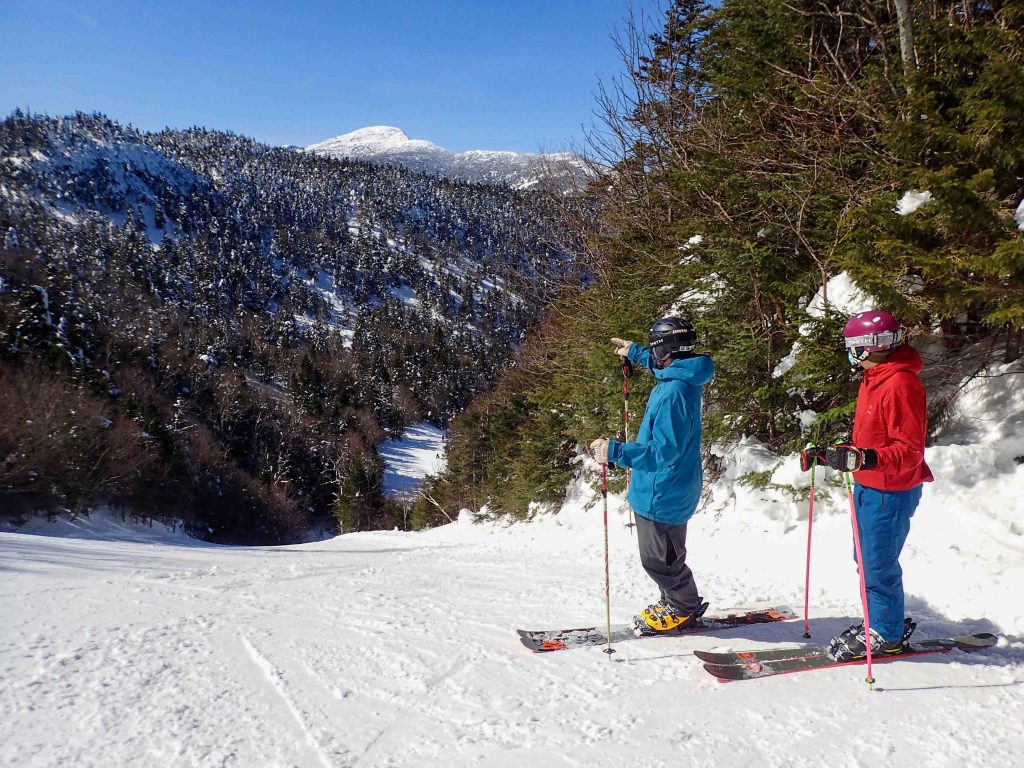
The post Voting is Live! Vote Now, Vote Often appeared first on Smugglers’ Notch Resort Vermont.

Good, Better, Best
Foliage Report:Good news, it’s still happening. Better news, the recently littered leaves on the ground have added another layer of foliage splendor. The best news, Smuggs is positioned right in the heart of it all. We are looking forward to having all of you here […]
ViewsFoliage Report:
Good news, it’s still happening. Better news, the recently littered leaves on the ground have added another layer of foliage splendor. The best news, Smuggs is positioned right in the heart of it all. We are looking forward to having all of you here for this holiday weekend, and there’s nothing like enjoying a Sunday knowing there’s no work the next day. So, take that drive, find those views, and if a stranger waves to you, it’s ok to wave back. Remember, the foliage fanatics will be out and about in full force all weekend. Plan accordingly, expect popular locations to be busy, and maybe take that road less traveled because the adventure is what you’ll remember. The weather is looking ideal for all those quintessential fall activities, so grab your flannels, vests, and boots with the fur, and come indulge in the sights, sounds, and flavors of the season.
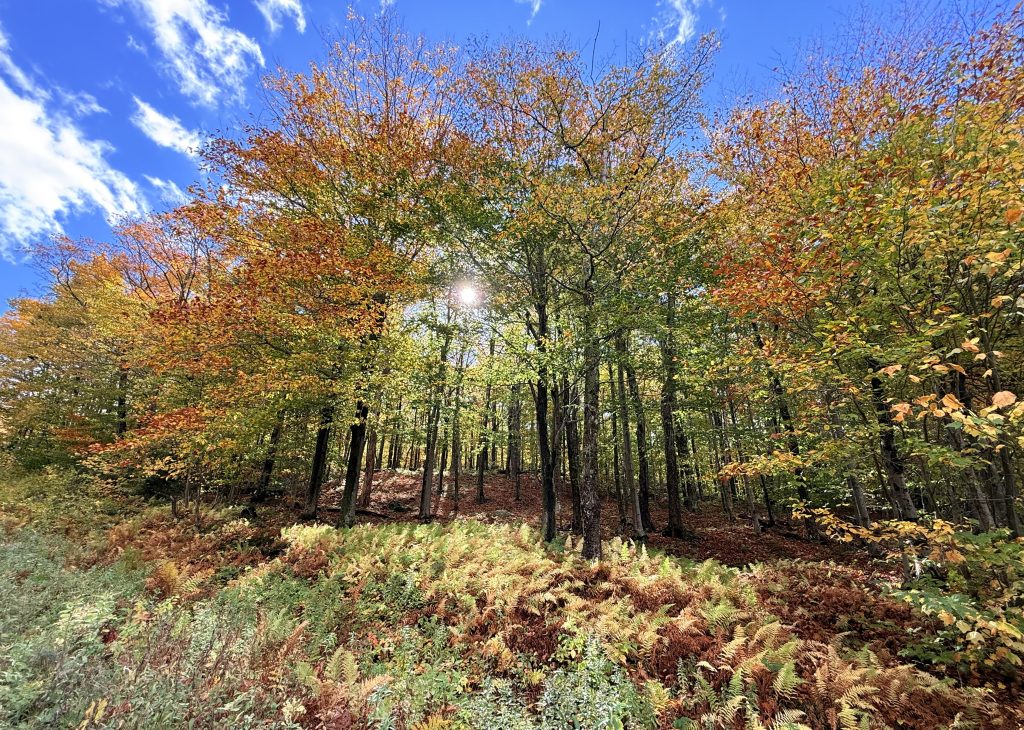
Weather Forecast
Friday: Areas of frost before 9:00 am. Otherwise, sunny, with a high near 57. Southwest wind 3 to 6 mph.
Friday Night: Mostly clear, with a low around 38. South wind around 7 mph.
Saturday: Sunny, with a high near 63. South wind around 5 mph, becoming calm in the morning.
Saturday Night: Partly cloudy, with a low around 42. Light east wind.
Sunday: Partly sunny, with a high near 63. Light east wind.
Sunday Night: A 40 percent chance of showers. Mostly cloudy, with a low around 46. East wind around 6 mph.
Monday: A 40 percent chance of showers. Mostly cloudy, with a high near 56. East wind around 6 mph.
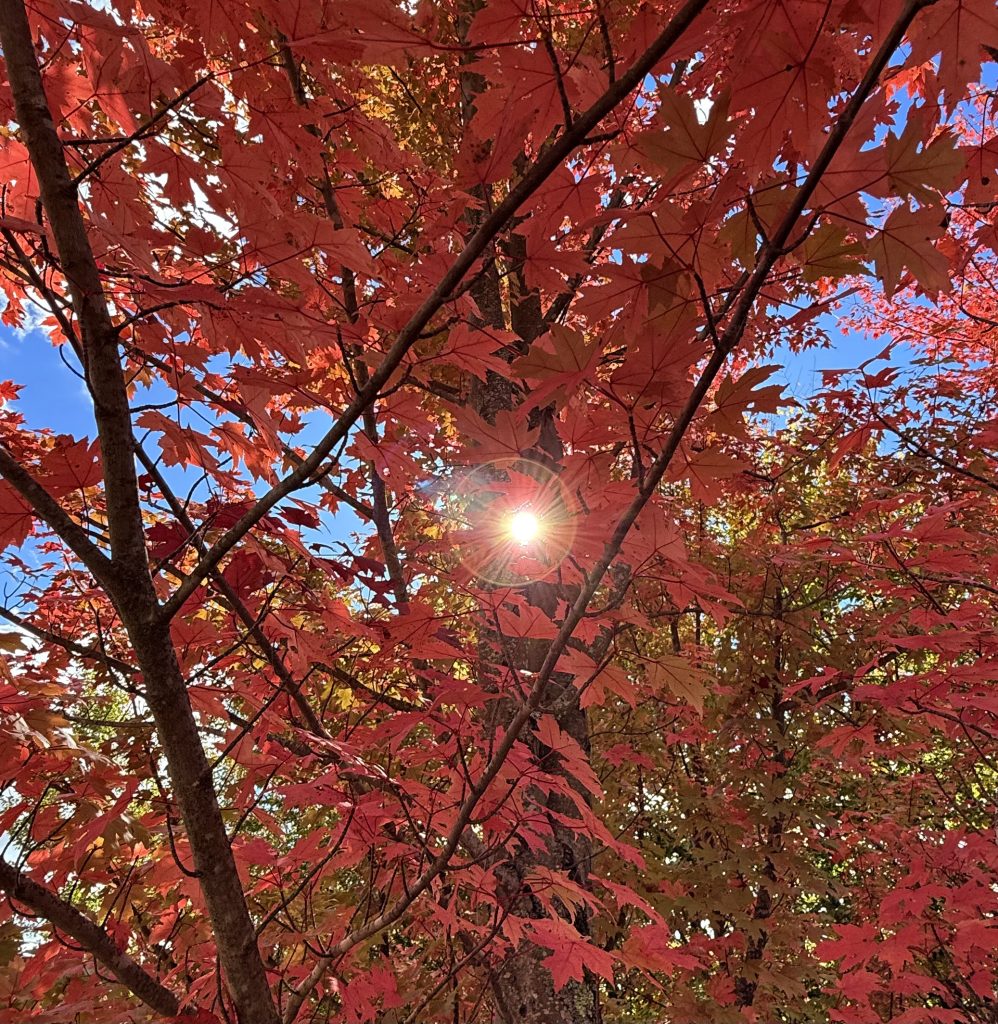
SNSC SKI SALE
Is your winter gear getting tired? Do your ski boots have broken buckles or do your gloves have the insulation fluffing out of the fingers? While you’re out leaf peeping this weekend, stop by the Smugglers’ Notch Ski Club sale at St. Michaels College. Great selection of new and gently used equipment, all priced to sell. Sometimes it can be hard to let go, but those Dynastar 8000 Legends from 2005 deserve a proper retirement after 20 years of service. Early bird gets the best choices at sales like these, doors open at 9:00 am on Saturday. Hit the button below to get all the details.
 Text Smuggs to 855-421-2279 for real-time alerts about weather updates, schedule changes, and more!
Text Smuggs to 855-421-2279 for real-time alerts about weather updates, schedule changes, and more!
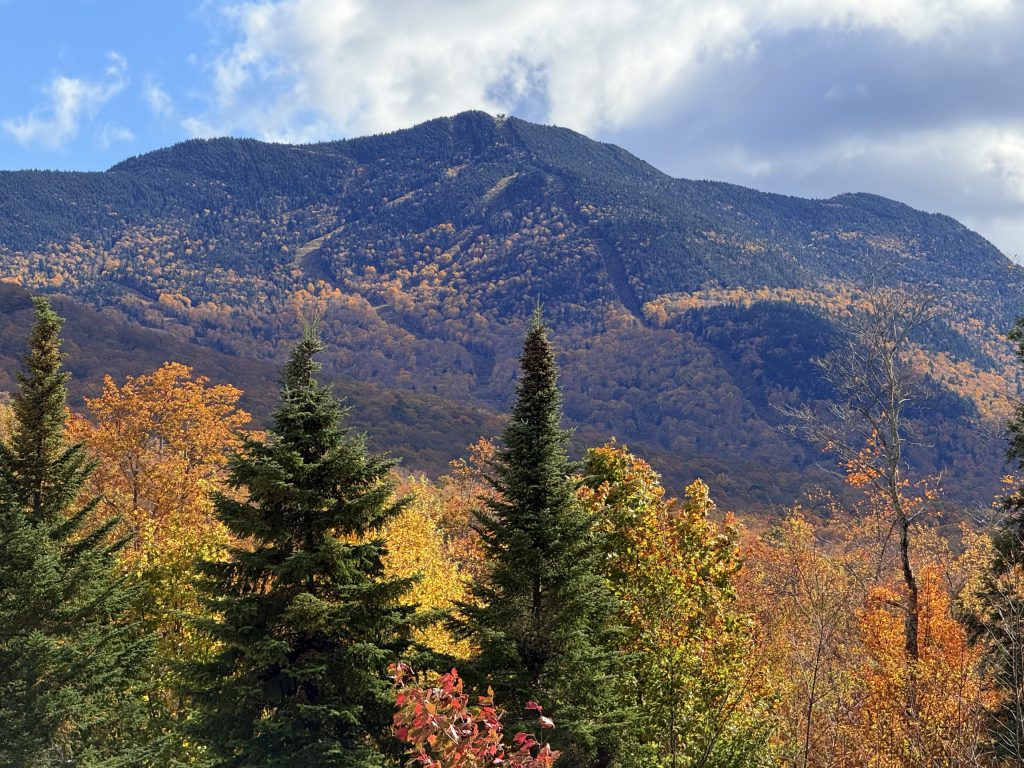
The post Good, Better, Best appeared first on Smugglers’ Notch Resort Vermont.
Ski Magazine
Love to Ski Groomers? 8 Resorts Known for Their Blue Cruisers. Here’s where you can set an edge on the freshest corduroy, plus tips to take your carve to the next level. Read more on skimag.com Best Resorts To Ski Groomers Most people think of […]
ViewsLove to Ski Groomers? 8 Resorts Known for Their Blue Cruisers.
Here’s where you can set an edge on the freshest corduroy, plus tips to take your carve to the next level. Read more on skimag.com
Best Resorts To Ski Groomers
Most people think of Smuggs as either a great family vacation or home to some of the best expert terrain in the East. In fact, it’s both. Skiers coming for quintessential New England groomers won’t be disappointed. Be sure to check out Chilcoot, off the Madonna 1 lift. It’s a lovely, long cruiser with bonus views of Mount Mansfield. Those in the group looking for some more adrenaline can seek out steep trees in Doc Dempsey’s Glades or just steeps on Upper FIS.
The post Ski Magazine appeared first on Smugglers’ Notch Resort Vermont.
Mountain Review: Gunstock
MOUNTAIN SCORE #6 in New Hampshire 49 #116 Overall WRITTEN REVIEW MOUNTAIN STATS CATEGORY BREAKDOWN See our criteria 4 Snow: 5 Resiliency: 2 Size: 3 Terrain Diversity: 3 Challenge: 6 Lifts: 7 Crowd Flow: 6 Facilities: 7 Navigation: 5 Mountain Aesthetic: GOOD TO KNOW […]
MountainMOUNTAIN SCORE
49
CATEGORY BREAKDOWN
4
Snow:
5
Resiliency:
2
Size:
3
Terrain Diversity:
3
Challenge:
6
Lifts:
7
Crowd Flow:
6
Facilities:
7
Navigation:
5
Mountain Aesthetic:
GOOD TO KNOW
1-Day Ticket: $65-$105
Pass Affiliation: None
On-site Lodging: No
Après-ski: Limited
Nearest Cities: Boston (2 hrs)
Recommended Ability Level:

+ Pros
-
Stunning lake views
-
Local feel
-
Close drive from Boston
– Cons
-
No on-site lodging
-
Modest footprint
-
Limited marked beginner terrain
MOUNTAIN STATS
Skiable Footprint: 227 acres
Total Footprint: 454 acres
Lift-Serviced Terrain: 100%
Top Elevation: 2,240 ft
Vertical Drop: 1,300 ft
Lifts: 8
Trails: 49
Beginner: 15%
Intermediate: 52%
Advanced/Expert: 33%
Mountain Review
Gunstock’s convenient location, extensive snowmaking, and large night-skiing operation make it an appealing alternative to the larger resorts farther north. For skiers coming from Boston or southern New England, it offers significant time and cost savings without giving up too much in terms of reliable coverage. However, potential visitors should note a couple of drawbacks that come with the convenience.
Views of Lake Winnipesaukee make skiing or riding at Gunstock a surprisingly pretty experience.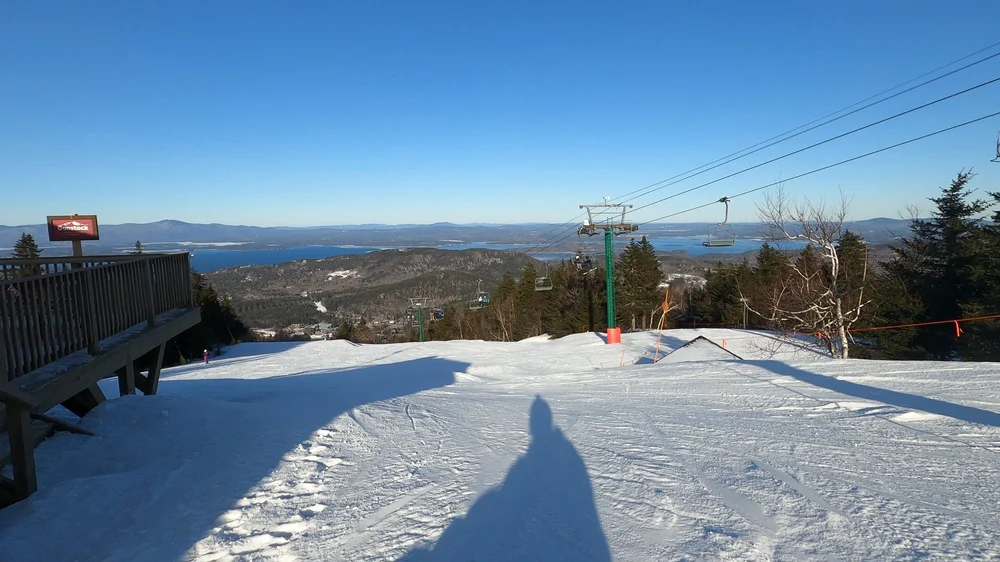
Mountain Aesthetic
Gunstock especially stands out for its lake views. The resort offers sweeping views of Lake Winnipesaukee, which are visible from the summit and from many trails across the mountain. The deep-blue lake dominates the landscape below, creating a striking contrast between the open water and the surrounding foothills, especially on clear days. The approach to the resort is also quite scenic and uncommercialized, passing through the Lakes Region with rolling hills and small towns along the way.
Size and Terrain Layout
Gunstock sits at a summit elevation of 2,240 feet with a vertical drop of approximately 1,300 feet. The resort offers around 227 acres of skiable terrain, including glades, which is smaller than mountains further north in the state but on par with other south-central competitors.
Gunstock’s 49 trails are arranged in a straightforward layout anchored by the Panorama Express, the mountain’s only high-speed lift, which reaches the summit in roughly five minutes. From the top, trails are typically divided into upper, middle, and lower sections, and some routes change in difficulty mid-mountain. There are effectively five distinct ways down: two continuous blue runs (Gunsmoke and Flintlock) and three that involve at least one black section (Recoil, Trigger/Ramrod, and Hot Shot). Recoil stands out for its variety and sustained pitch. Three of the five glades begin from the summit, though glade coverage is entirely natural and open only when snowpack allows.
Gunstock’s 227-acre footprint is on par with other south-central New Hampshire ski resorts but smaller than resorts further north in the state.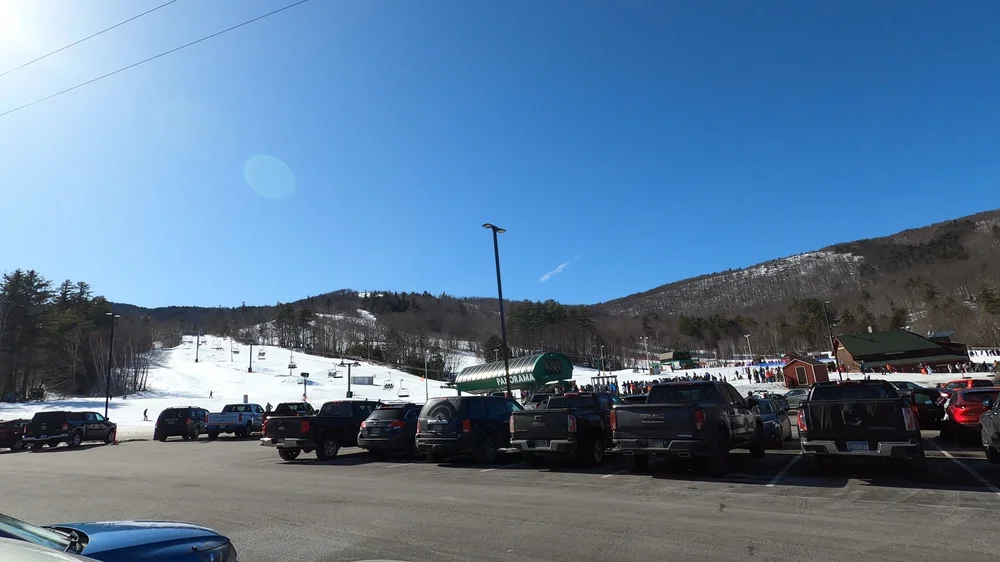
On the east side, the Pistol triple chair serves its own pod with a mix of park and tree skiing. Blundersmoke hosts the resort’s largest terrain park, while Sidearm offers a beginner park. The lift is slow but rarely crowded, and the area features two additional glades and Out of Sight, a narrow, winding trail frequently set up for ski-cross. Returning to the base requires crossing a small uphill section that snowboarders may need to push over, but strong momentum makes it manageable. Gunsmoke from the summit provides partial access into this zone.
West of Panorama lies Ramrod and Tiger, which together make up roughly a third of the resort’s terrain and are served by one fixed quad and one triple. These trails are the center of Gunstock’s racing scene and range from rolling blues to steeper black runs. Tiger accesses some of the resort’s steepest terrain, and sections are sometimes left ungroomed to create bump lines. Flintlock to Stonebar, the longest run on the mountain, wraps around this sector. Red Hat is a local favorite for its flow and pitch.
The final resort area is Penny Pitou, named after Gunstock’s most famous Olympic skier. This beginner area takes up a large amount of the flat base area and a small slope on the far-northwest side of the resort. It is serviced by a fixed-grip quad and two magic carpets, with a sizable ski school to boot.
TRAIL MAP
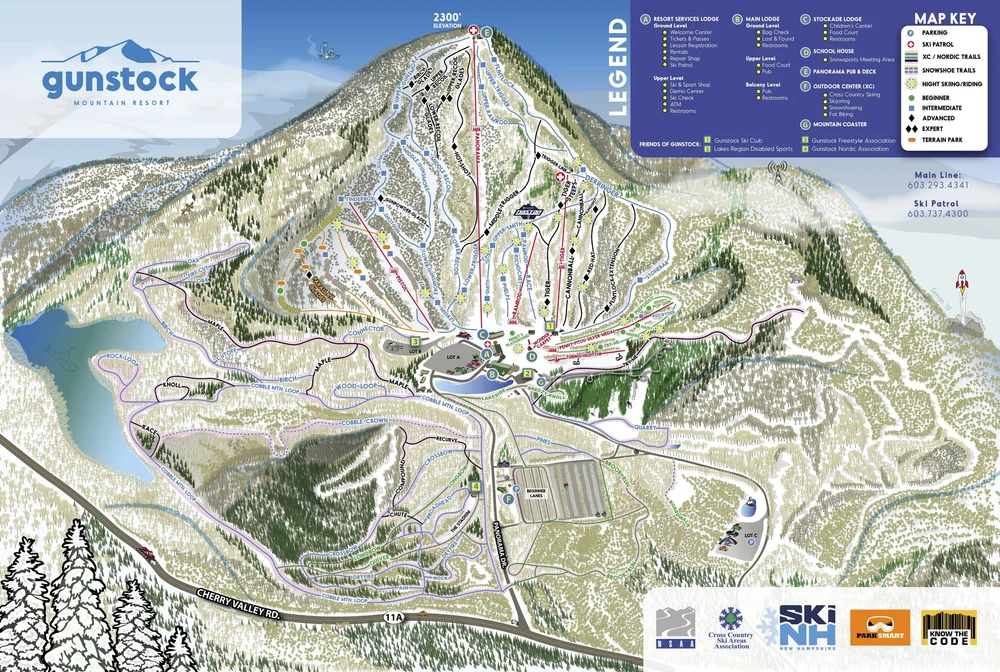
Beginner Terrain
When it comes to the beginner experience, Gunstock offers mellow slopes in the Penny Pitou area, as well as a terrain-park-oriented green off the Pistol chair. However, this is the only green-rated terrain Gunstock visitors will get, although there are a few easier blue routes descending from the summit. Fifteen percent of the resort’s terrain is rated green, and the setup is ideal for new skiers who prefer a contained learning zone.
Intermediate Terrain
Intermediate skiers make up the core audience at Gunstock, with 52 percent of the terrain designated blue. Grooming is excellent, and Gunsmoke and Flintlock in particular offer scenic, well-maintained descents with lake views the entire way.
Over half of Gunstock’s trails are rated as intermediate blue squares, although some of them are on the easier side as far as this trail rating generally goes.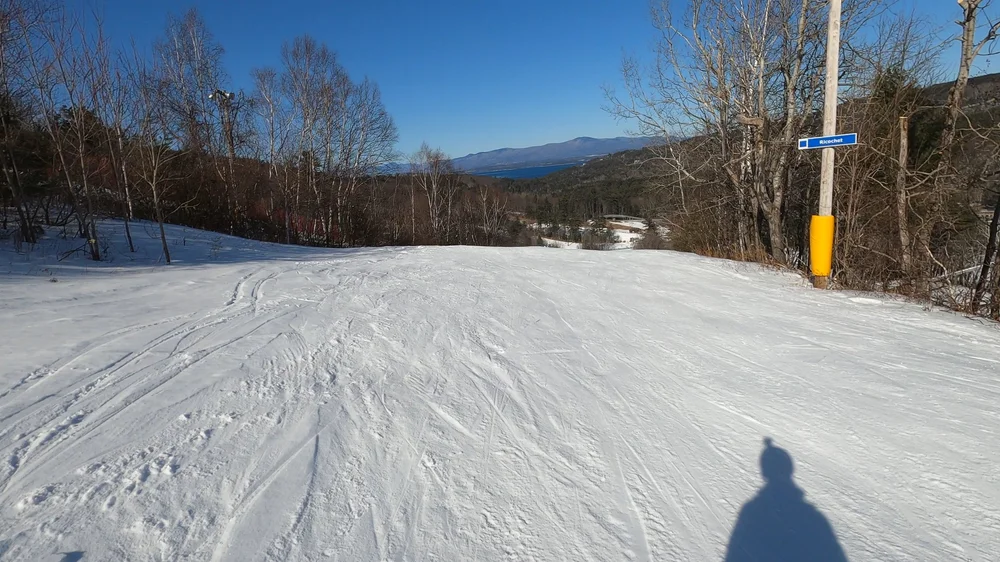
Advanced Terrain
Advanced terrain accounts for 31 percent of the mountain, concentrated on steeper pitches near Tiger and Hot Shot. The resort doesn’t feature extensive sustained steeps, but when it does get steep, the trails are generally wide and include long, mellow runouts at the bottom. While Gunstock lacks sustained expert fall-lines, one could argue some ungroomed single-black sections approach expert difficulty.
Expert Terrain
Officially, only two percent of the terrain is rated expert, limited to a short glade off Upper Recoil. Since there is no snowmaking in any glades, conditions are rarely good enough to allow this run to open.
Gunstock does have a few sections of steep terrain, although they are short, generally wide, and have long runouts at the bottom. 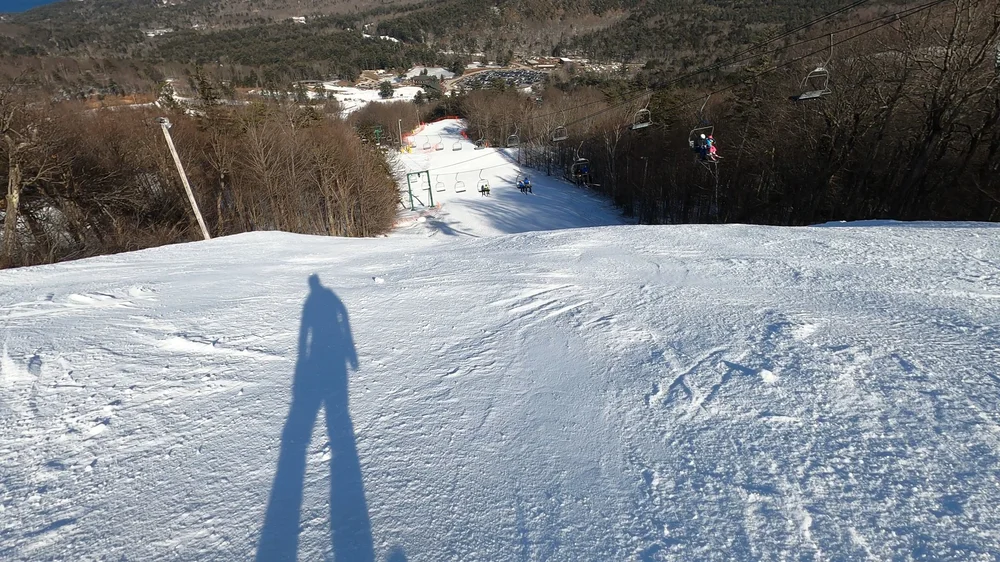
Terrain Parks
Gunstock has two terrain parks, both serviced by the Pistol triple chair. Sidearm is designed for beginners, featuring smaller, more approachable features that make it a good introduction to park skiing and riding. Blundersmoke, on the other hand, hosts the mountain’s largest jumps and features and serves as the main park for more advanced freestyle skiers and riders. The resort occasionally sets up ski-cross courses in this area as well.
Snow Quality and Resiliency
Gunstock averages around 100 inches of natural snowfall per year, which is better than some other southern New Hampshire ski resorts but modest by the state’s standards overall. Its proximity to the lake often brings mixed precipitation, but the resort compensates with snowmaking on 100 percent of non-glade terrain. Early December snowmaking builds a deep base (temperature conditions permitting), and the resort grooms most trails nightly to keep surfaces consistent, even after rain. A recently added winch cat maintains Hot Shot’s steeper pitches, and new snowmaking on Ramrod accompanied a trail extension this season. Glades remain natural snow only.
RECOMMENDED SKIS FOR GUNSTOCK
NOTE: We may receive a small affiliate commission if you click on the below links. All products listed below are unisex.
Recommended all-mountain ski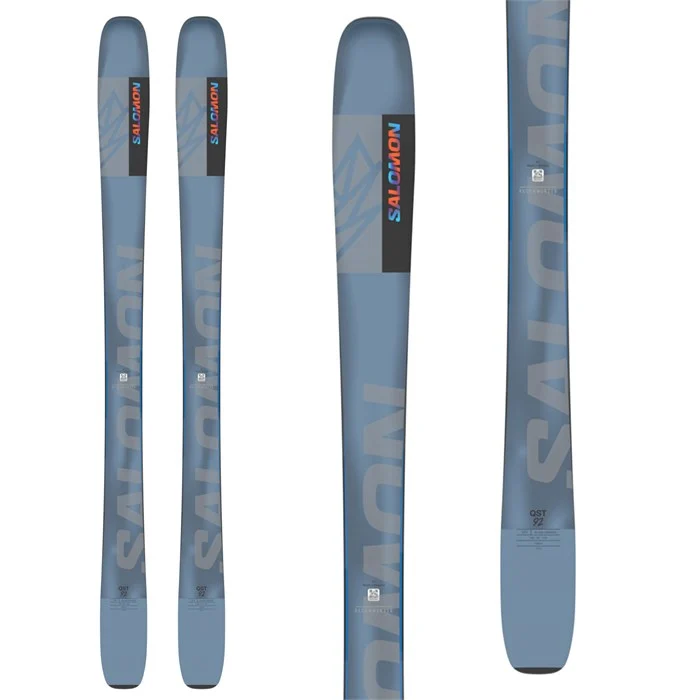
Recommended carving ski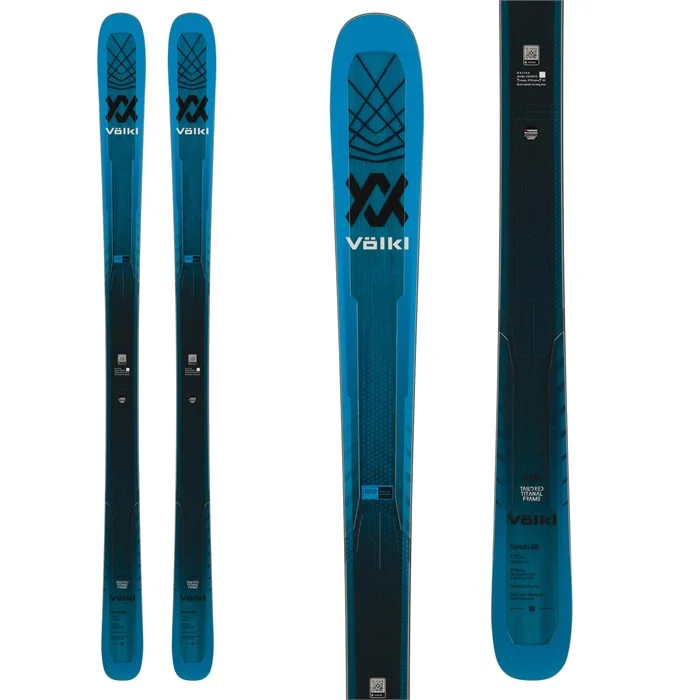
Recommended glade ski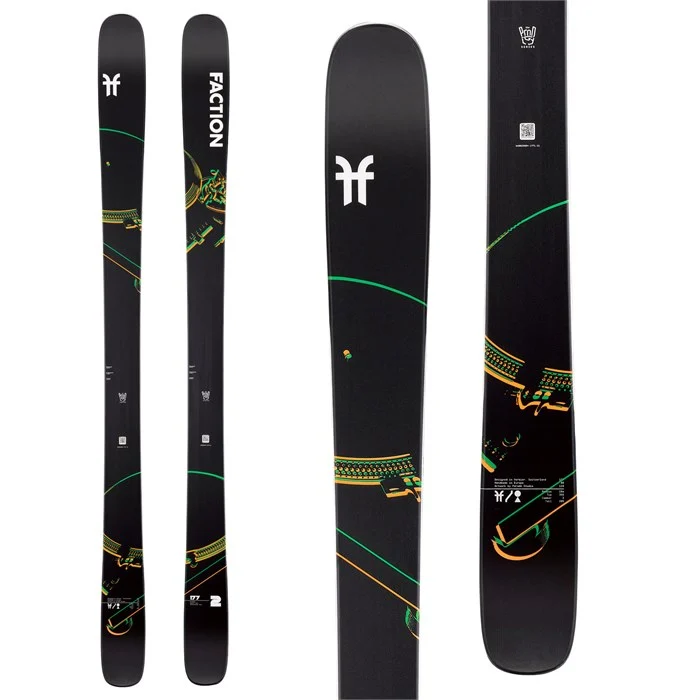
Recommended expert/touring ski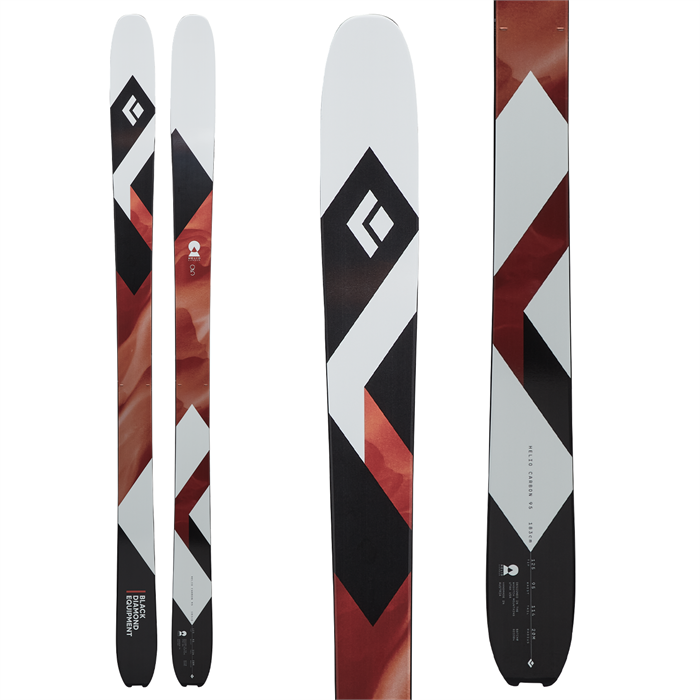
Navigation
Navigation at Gunstock is straightforward thanks to its compact layout and clear trail structure. Nearly every run from the summit involves a sequence of three connected trail segments: upper, middle, and lower (such as Upper Trigger, Middle Trigger, and Lower Trigger). Once visitors grasp this pattern, it becomes easy to plan routes and stay oriented. Options to switch trails mid-descent are clearly marked and easy to follow, with additional signs directing skiers toward different base areas and lifts.
Lifts
Lifts at Gunstock are anchored by the Panorama high-speed quad, which provides summit access in about five minutes. This lift generally handles the mountain’s main traffic well and helps keep pressure off the slower fixed-grip lifts.
The remaining lifts are primarily older triples and quads that operate at a slower pace but are typically uncrowded unless a race event is taking place. Notably, the Pistol triple was once the summit lift before being relocated to its current position when Panorama was installed, and it retains a useful secondary role serving terrain on the east side of the mountain.
Gunstock rarely sees significant lines at its lifts, although waits can build at the high-speed quad on the busiest days.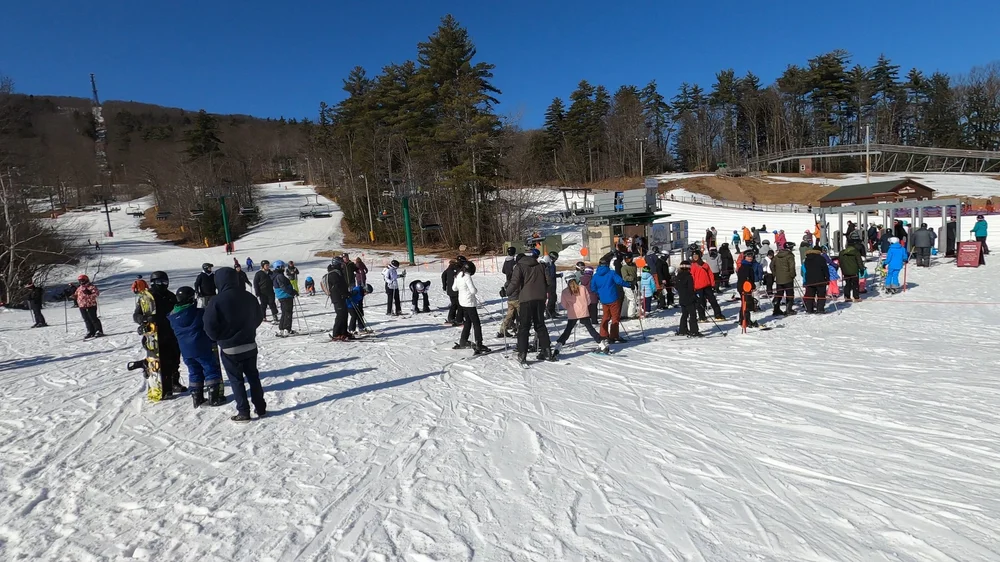
Crowds
Gunstock is not a member of any multi-mountain pass program unless you are a college student in New Hampshire. Therefore, crowds are mostly either locals or folks looking for a closer, less busy mountain. Saturdays can still bring heavy traffic and tickets can sell out, but under these circumstances, lift lines are usually still confined to the high-speed quad. On the busiest days, the resort usually manages singles lines efficiently, but those arriving after 9 or 10 a.m. may be directed to remote parking with shuttle service.
On-Mountain Facilities
While they’re not going to blow anyone away, Gunstock offers a decent set of facilities for a mountain of its size and local nature. The recently-expanded Panorama Pub summit lodge, features excellent views alongside limited bar service and hot food options. Bathrooms are available both at the summit and throughout the base area. The main base lodge includes a large cafeteria, a full-service restaurant, lockers, a brand-new tuning and repair shop, a sizable rental center, and a ski shop. Nearby, the Stockade Lodge provides another cafeteria option and sits adjacent to the resort’s large ski school, which serves skiers and riders of all ages.
RECOMMENDED SNOWBOARDS FOR GUNSTOCK
NOTE: We may receive a small affiliate commission if you click on the below links. All products listed below are unisex.
Recommended intermediate board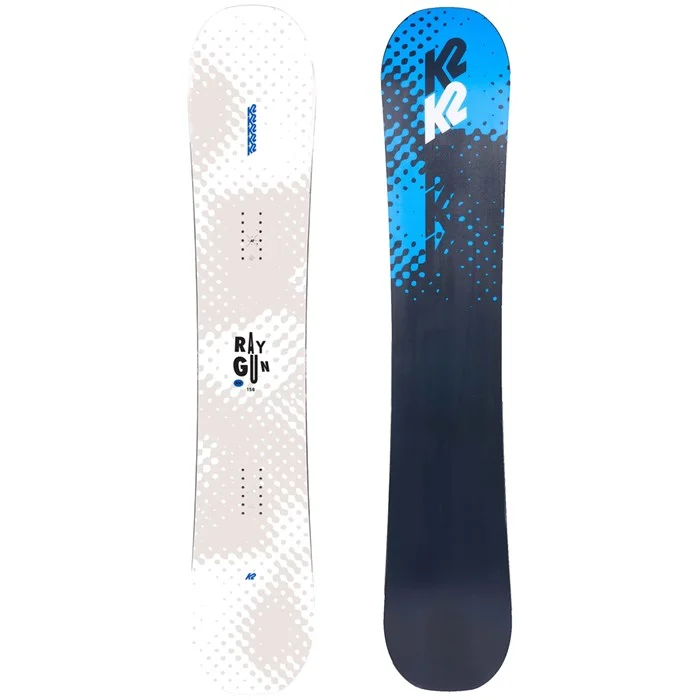
Recommended advanced board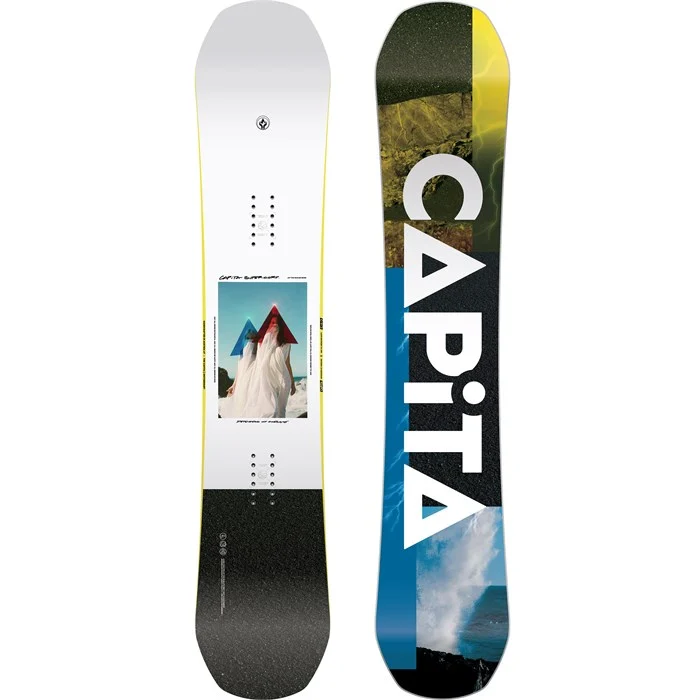
Recommended expert board
Recommended touring board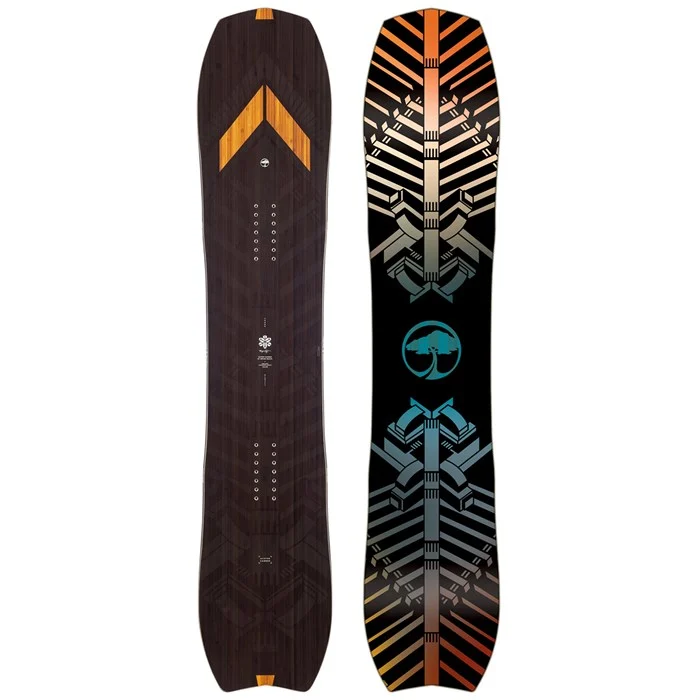
Night Skiing
Night skiing is one of Gunstock’s standout features. About half of the mountain remains open after dark, including significant portions of the Pistol, Ramrod, and Tiger areas. The combination of extensive lighting coverage and reliable snowmaking gives skiers and riders more time on the hill than at most resorts in the region, making it a popular option for locals looking to get in laps after work or visitors hoping to maximize their day.
Gunstock offers excellent night skiing for the region, with advanced and freestyle terrain consistently open.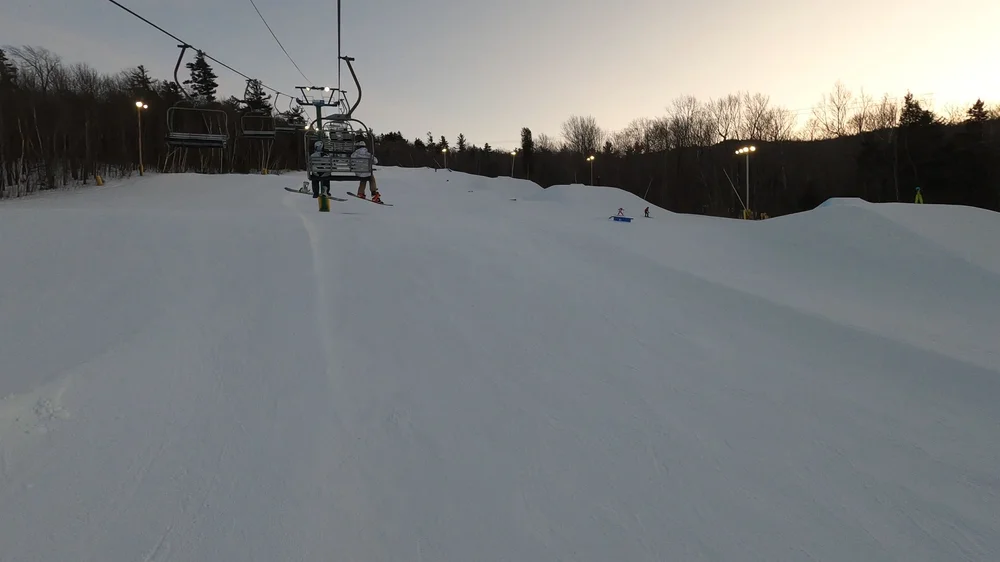
Other Activities
Beyond alpine skiing, Gunstock also offers tubing serviced by its own magic carpet lift, as well as a large cross-country skiing area with snowbike and snowshoe rentals, making it a well-rounded winter recreation hub.
Ownership and Development
One of the most unique things about Gunstock is that it is owned by Belknap County, making it one of the few county-run ski areas in the country. Residents elect the board that oversees operations, and recent years have seen substantial investment in infrastructure and snowmaking. The resort has outlined an ambitious expansion plan that could significantly increase its skiable acreage in the future. A leadership transition took place this season with longtime GM Tom Day retiring after 17 years.
While Gunstock doesn’t have any on-site lodging, parking is entirely free.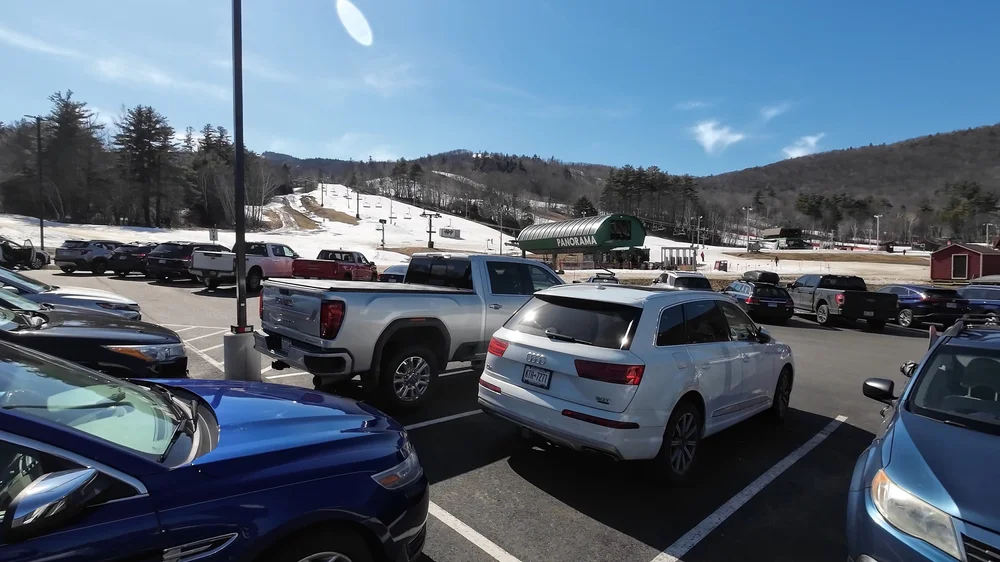
Getting There and Parking
Gunstock is located just under two hours from Boston with regular traffic conditions, with some northern suburbs significantly closer. A large portion of the drive from the Boston metropolitan area takes place on Interstate 93. For those without a car, the Cape Cod Ski Club operates regular buses from the Cape directly to Gunstock, making it accessible for day trips and group outings.
All parking at Gunstock is free, which is a welcome perk compared to some larger resorts in the region. The resort recently repaved its main parking lot and added streetlights to better accommodate night skiers. On busy weekends and powder days, several overflow lots are available, and the resort runs shuttle service to and from the base area to handle the increased traffic.
Lodging
There is no on-site lodging at Gunstock, but plenty of nearby options exist. The Gunstock Inn & Suites is located less than a mile from the resort, and the surrounding area offers a range of house and condo rentals suitable for families, groups, and weekend visitors. While it lacks the ski-in/ski-out convenience found at some larger mountains, its proximity to local towns provides enough flexibility for overnight stays.
Après-Ski
Gunstock does not have a dedicated ski village at its base, so après-ski options are limited to what’s available in the main lodge. The nearest towns, Gilford and Alton, are primarily summer resort communities rather than traditional ski towns. They offer their own charm, with a handful of restaurants and bars that can make for a pleasant evening after a day on the slopes, but visitors shouldn’t expect a bustling nightlife scene.
Gunstock’s high-speed quad lift and summit lodge make for a nicer environment than one might expect from a typical locally-run ski area.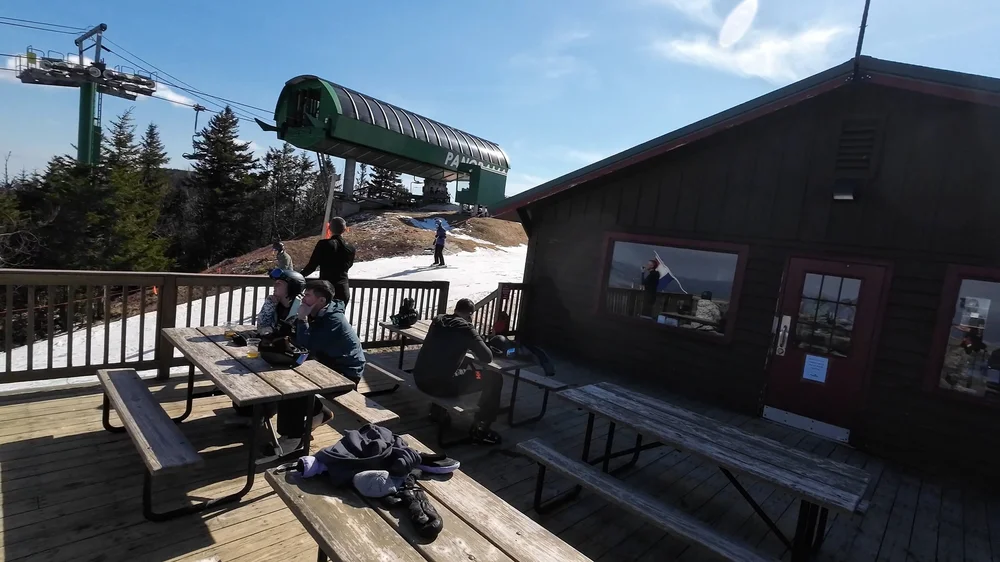
Verdict
Gunstock isn’t the biggest or most snow-sure mountain in New Hampshire, but for the convenience, it’s hard to beat. The resort delivers a refreshingly non-commercial experience with fantastic lake views to boot, and it offers more than enough for most day-trippers from the Boston area.
Pricing
For the 2024-25 season, Gunstock’s lift ticket prices ranged from $65-$79 on weekdays and $94-$109 on weekends, depending on the time of season. While these prices are lower than many of the larger White Mountain resorts, the difference is not dramatic. Season passes offer significant discounts when purchased in the spring, making them a smart investment for local skiers who plan to visit regularly.
While Gunstock is not part of any major multi-mountain pass network, the resort participates in the New Hampshire College Pass, a joint offering with Cannon, Cranmore, and Waterville Valley. This pass is available exclusively to college students in New Hampshire and costs $399 when purchased in advance, offering excellent value for in-state students who want access to multiple mountains throughout the season.
Leaf Peeping, the Smuggs Way
The Village is hopping, the leaves are popping, and the weather is just right. I was chatting with a fellow foliage reporter yesterday, and we came to the conclusion that there’s really no wrong way to enjoy leaf peeping, besides maybe going blindfolded. So, find […]
ViewsThe Village is hopping, the leaves are popping, and the weather is just right. I was chatting with a fellow foliage reporter yesterday, and we came to the conclusion that there’s really no wrong way to enjoy leaf peeping, besides maybe going blindfolded. So, find a road or trail less traveled, bring a snack and your camera, and enjoy the local beauty in whichever way suits you. Locally, I would say that from a birds-eye view, we are nearly peak foliage colors, but as you explore beneath the canopy, you’ll find lots of green still present. An insider tip from the north side of Smugglers’ Notch, if you’re looking to explore the caves, go for a hike, or even just drive through the pass, make a plan to do it early in the morning. Stowe and The Notch will become quite busy as the sun gets higher in the sky, and chances are you just drove away from traffic, so why would you want to sit in it again? On-site here at the Resort, as well as in Jeffersonville and Cambridge, there’s ample opportunity to take in the foliage and have your perfect fall experience. Do yourself a favor and plug “Bryce Road” into your GPS; you’ll thank me later.
Upcoming Events
 Martell’s at the Red Fox Harvest Fest
Martell’s at the Red Fox Harvest Fest
Join the fun at Martell’s in Jeffersonville on October 4 for the Annual Red Fox Harvest Fest—a full day of live music, local food, and fall vibes! Kids 12 & under get in free. Details and band lineup
 Text Smuggs to 855-421-2279 for real-time alerts about weather updates, schedule changes, and more!
Text Smuggs to 855-421-2279 for real-time alerts about weather updates, schedule changes, and more!
The post Leaf Peeping, the Smuggs Way appeared first on Smugglers’ Notch Resort Vermont.
Ikon Pass Increasing Friends & Family Discounts to 50% for a Limited Time
Background For a short window this October, Ikon Pass holders will be able to offer their friends and family special discounted tickets, as per the pass issuer. From October 9-30, 2025, passholders can share discounted lift tickets of up to 50% off window […]
Mountain

Background
For a short window this October, Ikon Pass holders will be able to offer their friends and family special discounted tickets, as per the pass issuer. From October 9-30, 2025, passholders can share discounted lift tickets of up to 50% off window rates, an increase from the usual 25%, at select Ikon destinations. As a reminder, Ikon full and Base Pass holders get up to 12 Friends & Family tickets (10 for Ikon Base) that can then be redeemed and used throughout the 2025-26 season, with select blackout dates for Ikon Base Pass holders.
The following resorts are participating in the promotion:
-
Steamboat
-
Winter Park
-
Palisades Tahoe
-
Stratton
-
Snowshoe
-
Mammoth
-
June Mountain
-
Crystal Mountain
-
Blue Mountain
-
Big Bear Mountain Resort
-
Sugarbush
-
Deer Valley
-
Solitude
-
Schweitzer
-
Arapahoe Basin
-
Copper
-
Eldora
-
Killington
-
Pico
-
Mount Bachelor
-
Brighton
-
Snowbird
-
Alyeska
Our Take
This move appears to be a direct response to Epic’s recently announced 50% off Epic Friend Tickets, which are permanent rather than temporary. Ikon’s offer is currently framed as a limited-time pre-season promotion, but it indicates that Alterra is paying close attention to the growing competitiveness around lift ticket pricing.
Lift ticket prices have risen dramatically in recent years, with peak-day window rates at major resorts now regularly surpassing $250. These prices have made skiing without a season pass increasingly difficult to justify, especially for casual skiers or those planning shorter trips. By increasing Friends & Family discounts, the large ski companies seem to recognize that their products are becoming less appealing to anyone who does not commit to a pass before the season starts.
There are, however, key differences between Ikon’s approach and Epic’s. While Ikon’s discounted tickets can be redeemed at any point during the season, they (at least for now) must be shared during a short October window. This timing may limit their impact because many of the people who would benefit from discounted lift tickets have not finalized winter plans this early. Epic’s program, by contrast, allows discounted tickets to be purchased throughout the season, which is likely to reach more potential visitors over time. In addition, several popular ski resorts, including Jackson Hole, Alta, and Big Sky, are absent from the promotion.
This is not the first time Ikon has experimented with boosted Friends & Family discounts. Last season, select mountains offered 35% off, but the offer was limited in scope. The new 50% discount represents Ikon’s most aggressive effort yet, though its effectiveness will depend heavily on whether the preseason timing resonates with prospective skiers. It also remains to be seen whether Ikon decides to extend this discount to be issuable during the winter season itself.
Considering the Ikon Pass? Check out our detailed comparison against competing Epic, Mountain Collective, and Indy offerings. You can also check this comparison out in video form below.
HEAD Kaliber 110 MW Double BOA
The new HEAD Kaliber boot is the epitome of personalised precision. Designed to maximise the potential of BOA® closure technology, it delivers both comfort and control. Available in multiple flex options (130, 110, and 105W), the Kaliber balances performance with accessibility in a sleek, modern […]
Ski BootThe new HEAD Kaliber boot is the epitome of personalised precision. Designed to maximise the potential of BOA® closure technology, it delivers both comfort and control. Available in multiple flex options (130, 110, and 105W), the Kaliber balances performance with accessibility in a sleek, modern package.
Key Specs & Features
-
Flex Options: 130, 110, 105W
-
Flex Tuning: Customisable for tailored performance
-
Construction: Bi-Injection shell for precision fit
-
Liner: 3D Synapse EVO liner for anatomical comfort
-
Last: 100mm (size 26.5)
-
Sole Options: GripWalk & Alpine heel/toe pieces available
-
Closure: Double BOA® for fine-tuned adjustment
On The Slopes / In Use
The Kaliber 110 MW Double BOA excels for skiers who want a responsive yet comfortable boot. The BOA® system ensures a snug fit that can be adjusted quickly on the fly, while the 100mm last strikes a good balance between performance and comfort. Its accessible flex makes it a versatile option for ambitious intermediates through to advanced riders.
What We Love
-
Double BOA® for precision fit and quick adjustments
-
Multiple flex choices for different skiers
-
Customisable with GripWalk or Alpine soles
-
Comfortable yet responsive 3D Synapse EVO liner
Things To Note
-
Performance focus — may be too stiff for beginners
-
Requires careful fitting to maximise the BOA® system benefits
Price & Stockist
-
RRP: £510
-
Stockists: Ski Exchange, Ellis Brigham, Snow & Rock and multiple HEAD Authorised stockists in the UK.
- BUY NOW
FAQs
Q: Who is the Kaliber 110 MW best for?
A: Intermediate to advanced skiers looking for precision, comfort, and the versatility of BOA® closure technology.
Q: Is the fit customisable?
A: Yes — the flex can be tuned, and interchangeable sole options allow compatibility with both Alpine and GripWalk bindings.
Q: How does it compare to other BOA boots?
A: The Kaliber maximises BOA®’s precision by pairing it with a responsive shell and liner, offering greater control than many entry-level BOA-equipped boots.
Why you need to upgrade to BOA Ski Boots
See more ski gear reviews at InTheSnow.
The post HEAD Kaliber 110 MW Double BOA appeared first on InTheSnow.
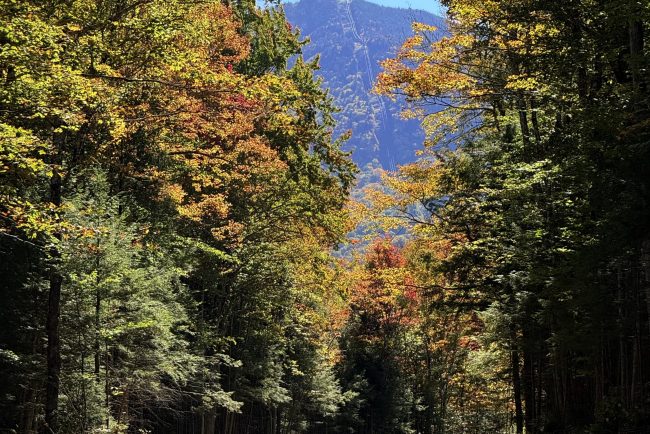
The Mission for Views
Yesterday, Caleb (our social media manager) and I went for a local drive to take in the nearly peak colors in our quaint little valley. We took off from Smuggs and drove up Dejardins Road, a small dirt road that parallels Route 108 South, heading […]
ViewsYesterday, Caleb (our social media manager) and I went for a local drive to take in the nearly peak colors in our quaint little valley. We took off from Smuggs and drove up Dejardins Road, a small dirt road that parallels Route 108 South, heading up into the notch. This road offers a peak-a-boo view of Madonna, and the framing of Liftline with the shades of foliage reminded us why people come from around the world to see this area at this time of year.
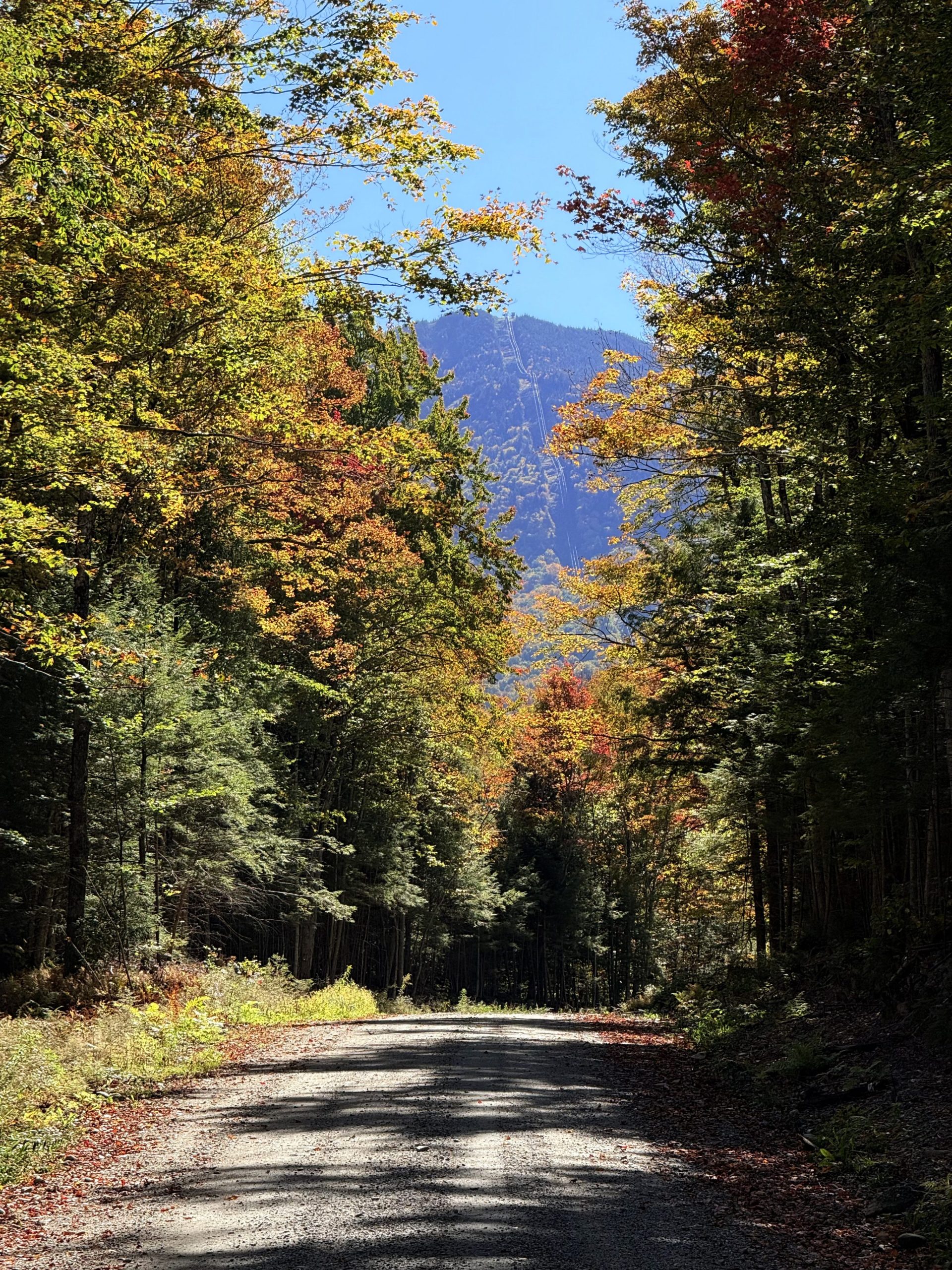
We continued up the hill and into the notch. The top parking area was buzzing with folks from all walks of life taking in the stunning transition. The hardwoods’ leaves—showing vivid oranges, yellows, and reds—contrasted beautifully against the deep greens of the conifers, their respective roots somehow clinging to the sheer cliffs. We took a quick walk up past the smuggling caves to an overlook (where I proposed to my wife—she said yes!) to get a bird’s-eye view back north out of the notch. From this perspective, we once again got a view of the peak of Madonna, peeking over the ridgeline of Spruce Mountain. Pictures were snapped, content was captured, and the small effort to get to a different level was well worth it.
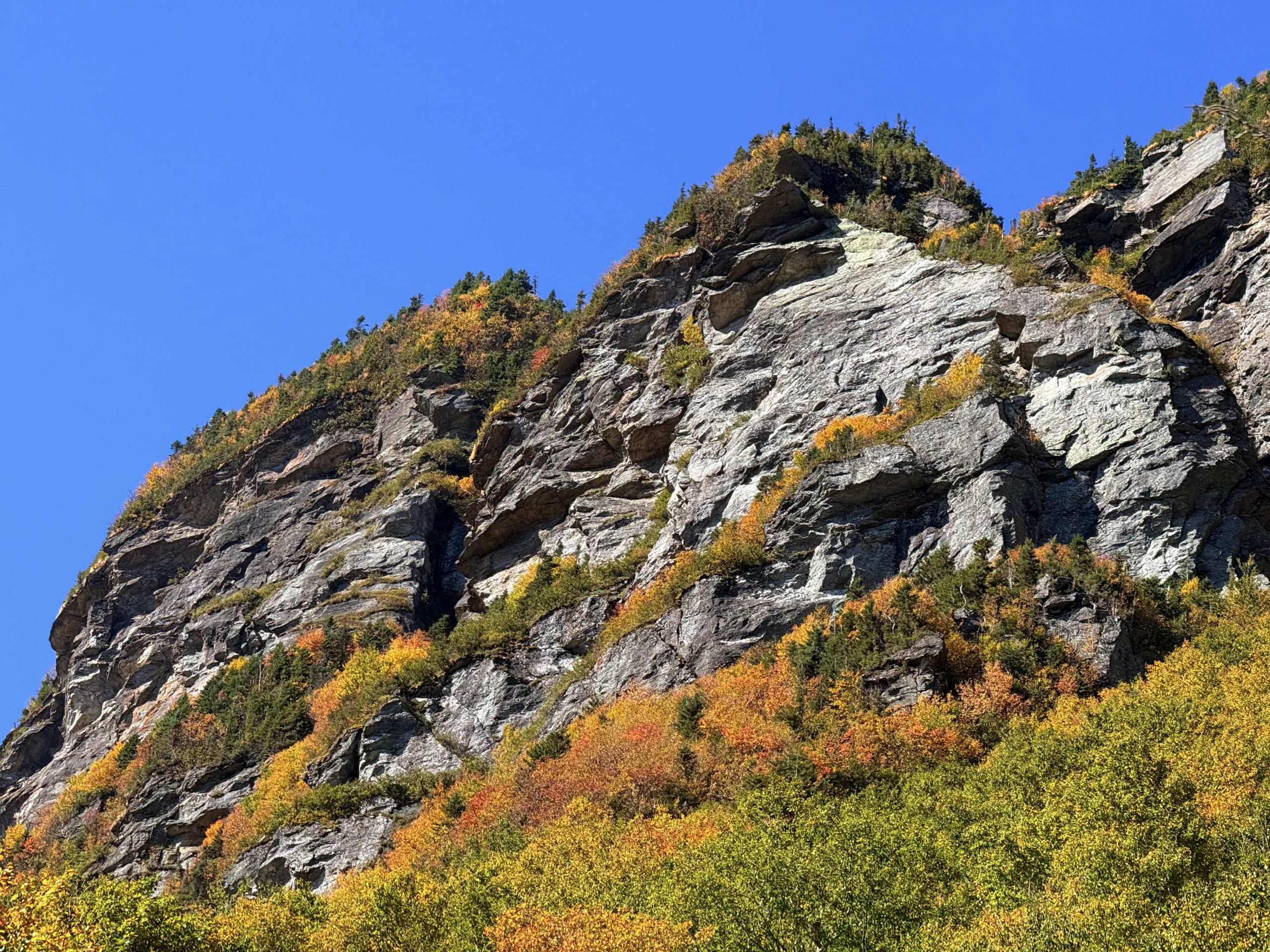
We continued our mission for views by taking a local country road loop through Jeffersonville. We cruised down into town and took a left onto the aptly named Pleasant Valley Road. This road continues all the way to Underhill, and for those who prefer to keep the wheels on pavement, it alone is quite spectacular. We quickly veered off onto Williamson Road, a dirt road that connects Upper and Lower Pleasant Valley and runs along the uphill side of the Lamoille River. This road acts as an alternate route between Jeffersonville and Cambridge if Route 15 becomes impassable. At the end of Williamson, we turned left onto Bryce Road, which, in my opinion, may offer the best view of Mount Mansfield in the entire state of Vermont. The road splits between two classic New England cow farms, and there’s a good chance you might even encounter a heifer out of its pasture—so drive slowly and remember to take your eyes off the mountain occasionally. Mount Mansfield and its proud prominence stands tall in the southern distance. The ridgelines run true and strong into the valley, almost like roots holding the mountain in place. We admired the authority the mountain holds and were once again reminded of what a special place Northern Vermont is.
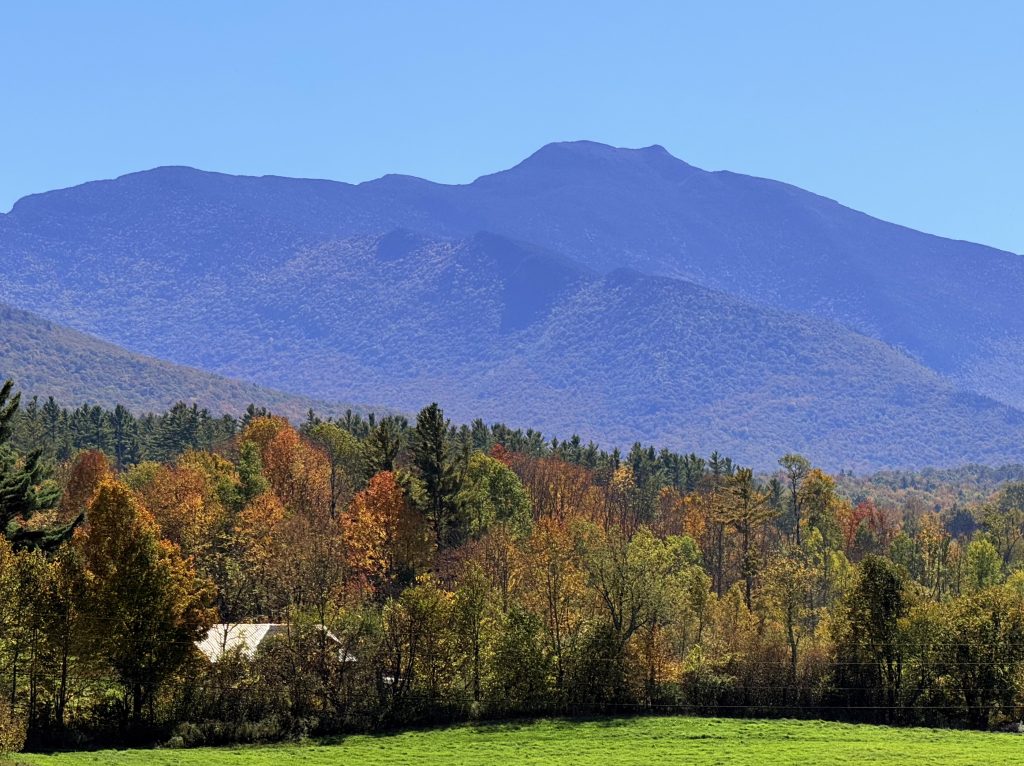
We then moved along to one of my favorite roads in Vermont—Thompson Road. This nearly Class 4, mostly single-lane dirt road plunges directly into a deciduous forest. The canopy tunnels the road, and the high banks pinch your vehicle into the lane. As we ventured forward, multiple gusts of wind released showers of leaves that cascaded down in front of my pickup truck—the quintessential fall moment.
From there, we made our way back to Smuggs—an hour-long tour in total. What struck us most was how much pure fall foliage we experienced in such a short time. It made me think about how many memories you could make spending an entire extended weekend going through these same motions. Fall is absolutely fleeting—so act now and get your chance to peep the peaks at peak.
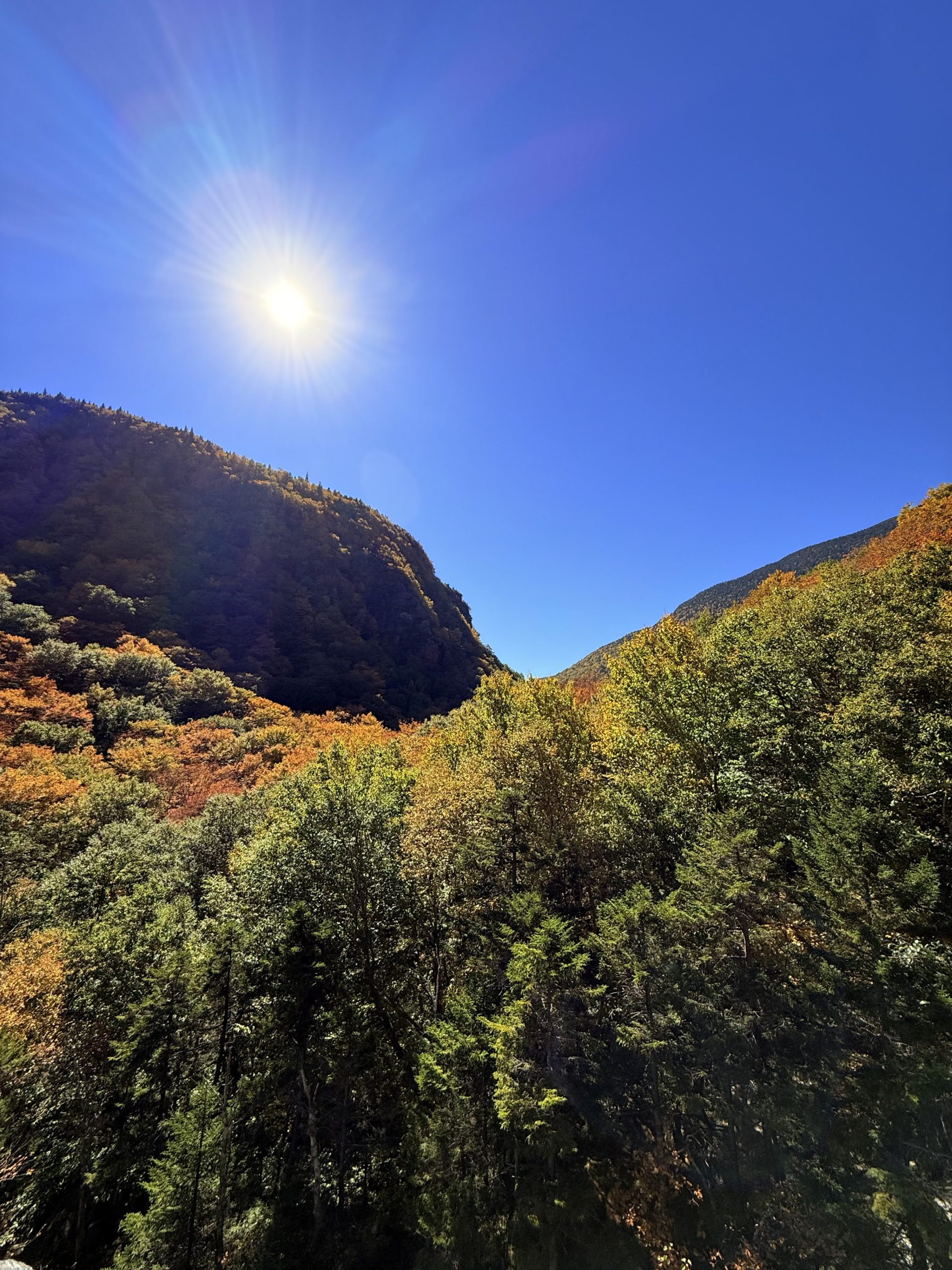
Weather Forecast
Today
Sunny, with a high near 65. North wind 5 to 9 mph, with gusts as high as 21 mph.
Tonight
Mostly clear, with a low around 40. North wind around 6 mph.
Wednesday
Sunny, with a high near 57. North wind 6 to 9 mph, with gusts as high as 21 mph.
Wednesday Night
Mostly clear, with a low around 36. North wind 3 to 5 mph.
Thursday
Sunny, with a high near 61. Calm wind.
Thursday Night
Partly cloudy, with a low around 41. Light south wind.
Activity Spotlight
Llama Treks. Wednesday, 10:30 am – 1:00 pm.
Sign up today for maybe one of the most unique foliage peeping activities in Vermont.
Hike and picnic with these gentle, intelligent creatures from Northern Vermont Llama Company in the woods and trails surrounding Smugglers’ Notch. Remember, llamas are pack animals only; you may not ride them. Please come prepared for hiking with sturdy footwear and water. These three-hour treks are fun for all ages but are not stroller accessible. Please bring your own snacks and water, which your family’s llama will carry for you! We will supply a dessert of Ben & Jerry’s ice cream and beverages.
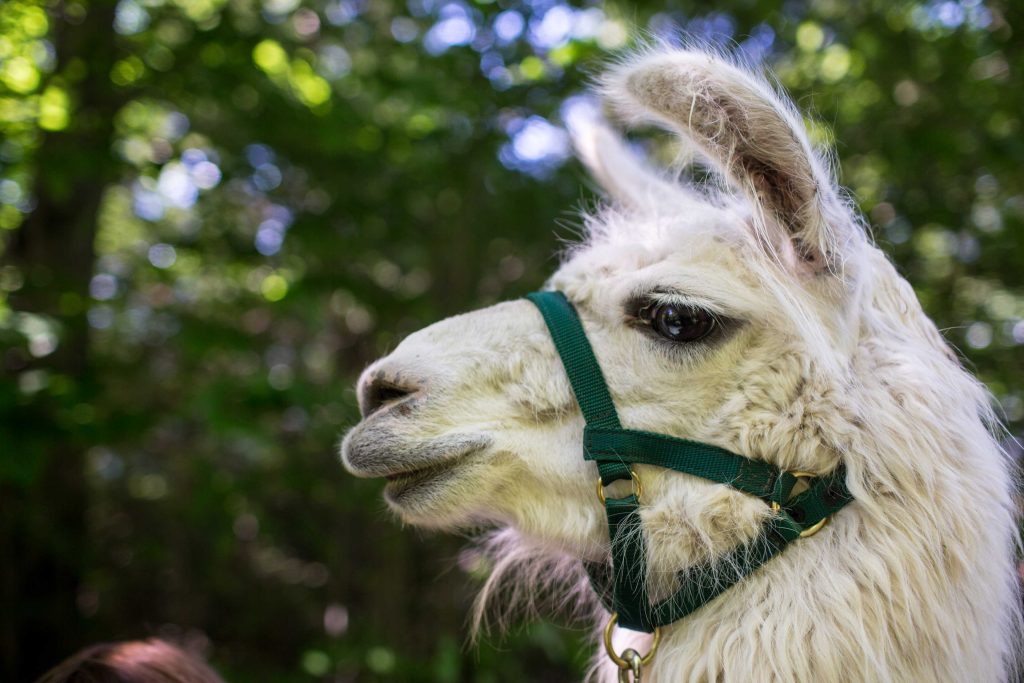
 Text Smuggs to 855-421-2279 for real-time alerts about weather updates, schedule changes, and more!
Text Smuggs to 855-421-2279 for real-time alerts about weather updates, schedule changes, and more!
The post The Mission for Views appeared first on Smugglers’ Notch Resort Vermont.
Vail Resorts’ $21 Million Court Loss Explained (And Why You Should Care)
Resorts like Mount Hood Meadows are at risk of a complete shutdown within the next 12-18 months due to an escalating liability crisis. Background When it comes to the last 12 months, developments for Vail Resorts have not been decidedly what one might […]
Mountain
Resorts like Mount Hood Meadows are at risk of a complete shutdown within the next 12-18 months due to an escalating liability crisis.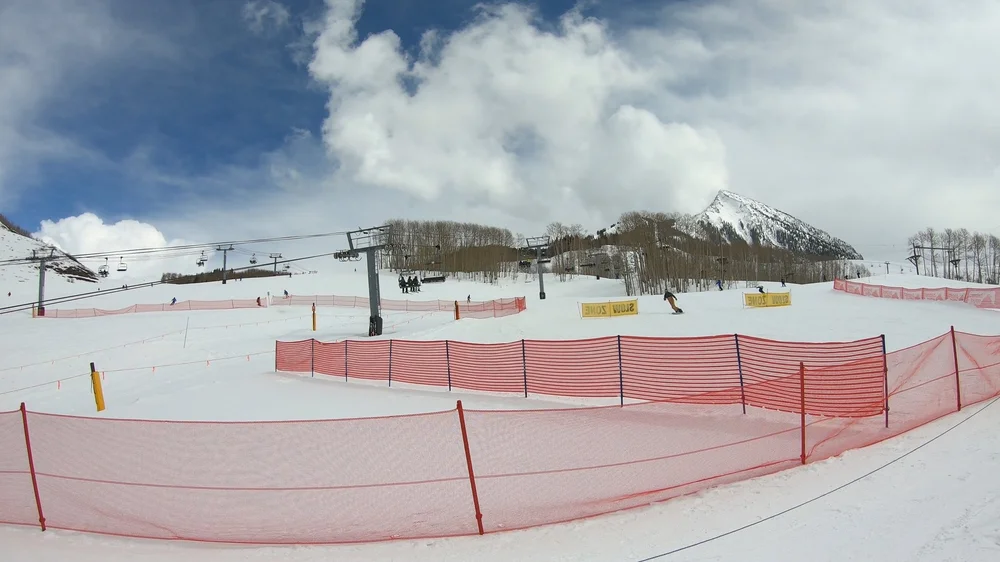
Background
When it comes to the last 12 months, developments for Vail Resorts have not been decidedly what one might call good. But within the past few weeks, the news has arguably gotten even worse. Earlier this month, the company was hit with a multi-million dollar jury verdict after a serious accident at one of its ski areas. But while the verdict on its own certainly doesn’t look good for Vail Resorts, the decision also has far bigger implications for several other high-profile incidents Vail is already facing—plus creates new precedent for the American ski industry as a whole.
So what exactly forced Vail Resorts to pay out such a large amount of money, and what does it all mean for the U.S. ski industry going forward? Well, in this piece, we’ll go through the background of this case, its decisioning and reasoning, and what all of this means for you as you go on your next ski trip.
The Paradise lift at Crested Butte, pictured above, was the site of the catastrophic accident that spawned all of the legal developments discussed in this piece.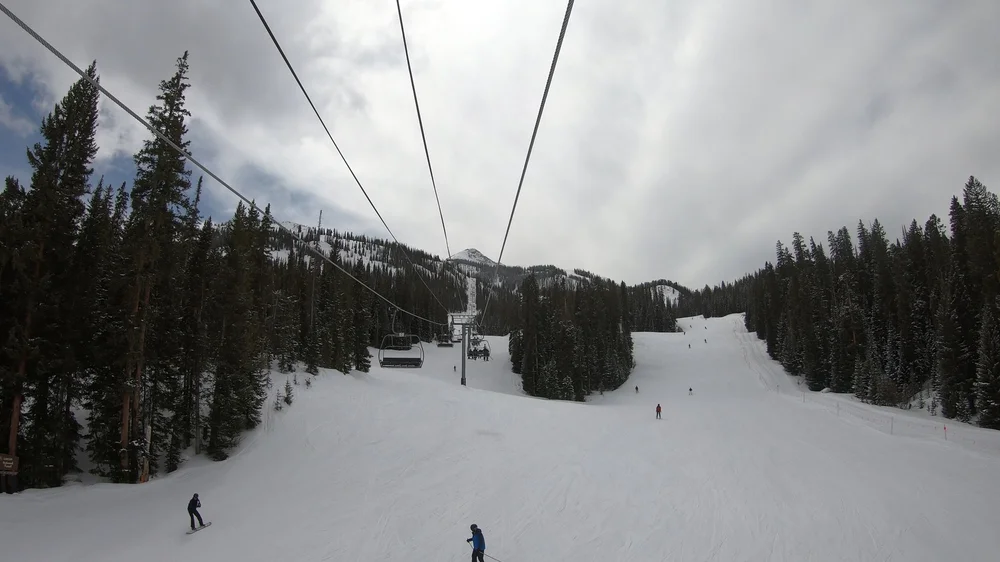
A Catastrophic Ski Lift Accident in Crested Butte
Before we jump into the decision that cost Vail Resorts tens of millions of dollars, we have to provide some background to it. In March 2022, a 16-year-old skier named Annie Miller was visiting Colorado’s Crested Butte ski resort with her church youth group. On what would become her final run of the trip, she and her father attempted to load the resort’s Paradise Express quad chairlift, a high-speed detachable quad installed in 1994 that’s similar to lifts found at many other destination ski resorts in the country. Detachable lifts are notable for their slower terminal speeds, which typically allows for easier loading and unloading and gives lift attendants more time to spot misload problems.
However, something went wrong during this particular loading process. Annie never settled fully into the chair before it left the terminal and began accelerating to full speed, reportedly leaving her dangling in mid-air as the chair kept moving. Her father shouted for the operator to stop the lift and clung desperately to her arm, but by the time the liftie reacted and actually stopped the lift, it was too late. Unfortunately, Annie slipped from the chair, falling roughly 30 feet onto hard-packed snow. The impact shattered her C-7 vertebra and left her paralyzed from the chest down.
In the aftermath, Miller faced a long rehab process and the life-changing reality of becoming a paraplegic. Given the circumstances, her family believed the lift crew had been negligent in failing to stop the chair when it was obvious she hadn’t loaded safely. That belief set the stage for the years-long legal battle that ultimately culminated in the landmark ruling earlier this year.
The Initial Lawsuit and Liability Waiver Implications
Liability waivers like this one have long protected ski resorts from catastrophic lawsuits stemming from high-risk activities.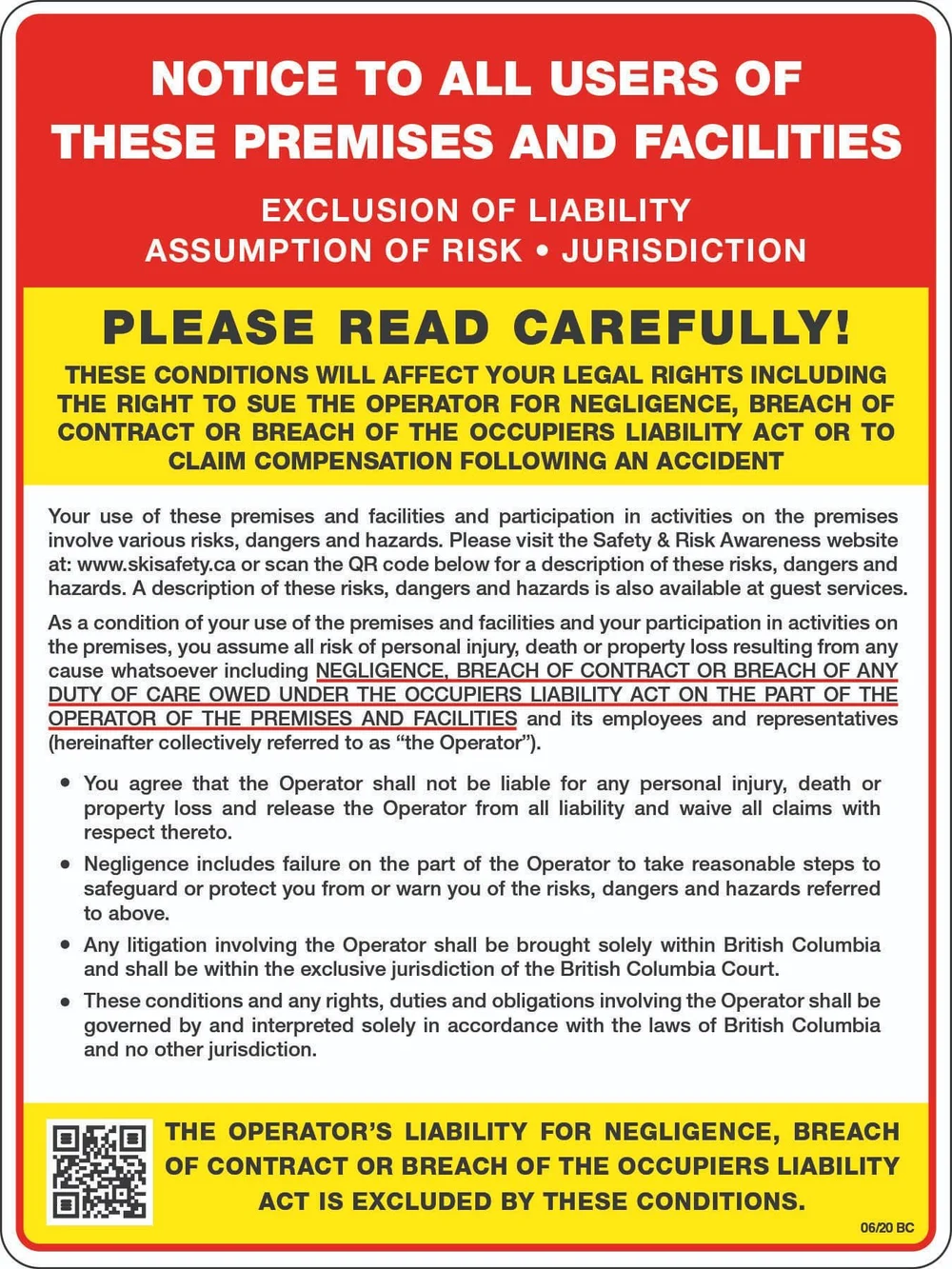
After the accident, Miller’s family filed a lawsuit against Crested Butte and its parent company, Vail Resorts, in Broomfield County District Court (the jurisdiction where Vail’s headquarters are located). The suit alleged multiple claims: that the resort had breached its duty of care to safely operate the lift, that the lift operators were negligent in failing to respond appropriately, and gross negligence for recklessly disregarding safety. Now, under a situation like this, there are two major defense strategies that a ski resort company like Vail Resorts might rely on: 1. the Colorado Ski Safety Act, and 2. the standard liability waiver included with every lift ticket in the state.
Under the Colorado Ski Safety Act, skiers and riders accept many inherent risks of in-bounds skiing—including weather, snow conditions, or the potential for collisions—and ski areas enjoy broad protections from lawsuits over those inherent risks. Notably, however, the law explicitly excludes chairlift accidents from the definition of inherent skiing risks, so that shield wasn’t going to do them much good in this case. On the other hand, the liability waiver provided Vail Resorts with much more solid ground. Like most ski areas, Crested Butte required guests to sign a liability release when purchasing a ticket or pass product. Vail’s lawyers argued that this waiver—a click-through agreement Miller’s father had signed when buying their passes—should bar any claim of negligence relating to the lift fall. For decades, such waivers have given ski resorts near-blanket immunity from lawsuits; one can debate the ethics of it, but it’s long been a rule of thumb in the industry that by signing a ticket or season pass waiver, guests give up their right to sue for ordinary negligence on the mountain.
And initially, Vail Resorts’s liability waiver argument actually held up. In April 2023, a Broomfield County judge agreed in large part with Vail Resorts and dismissed the bulk of the Miller family’s claims, including the ordinary negligence and “duty of care” allegations, leaving only the gross negligence claim intact. In other words, the court ruled that because Miller’s ticket waiver warned of risks like misloading or falling from a lift, the resort was contractually protected against standard negligence claims stemming from the incident. Miller’s case was not unique in this regard—for years, many ski injury lawsuits have been halted in their tracks by similar waivers and state statutes shielding resorts from liability for skiing accidents.
However, the Millers did not give up. They appealed the dismissal to the Colorado Supreme Court, arguing that a ski resort cannot contract away its legal duty to operate chairlifts safely under state law. They argued that even if a skier or rider signs a waiver, the resort should still be accountable if it violated specific safety statutes or regulations designed to protect the public. This set the stage for a high-profile decision at Colorado’s highest court that ultimately led to the multi-million-dollar payout a few weeks ago.
The Miller v. Crested Butte case loosened immunity protections for ski resorts in the case of negligence.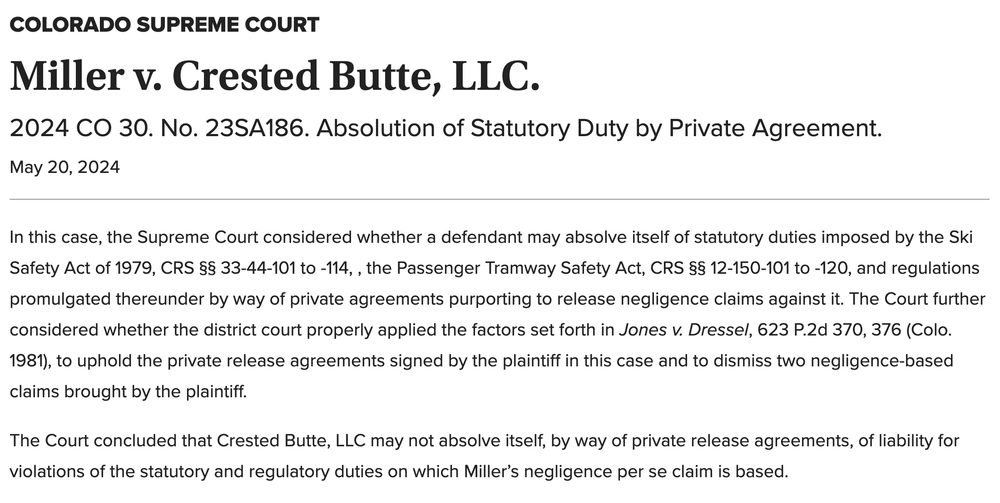
Miller v. Crested Butte: A New Negligence Standard
In May 2024, the Colorado Supreme Court issued a landmark 5-2 decision that set a new precedent for ski area immunity in the state. The court drew a crucial distinction between ordinary negligence and negligence per se—the latter meaning negligence based on violating a law or regulation designed for safety. The justices ruled that while general risks outlined in the waiver (like falls from lifts due to misloading) could still be waived by a contract, a ski resort could not use a waiver to shield itself from liability if it failed to obey safety laws or regulations. This was the first time Colorado’s highest court had ever ruled against the blanket enforceability of ski liability waivers, marking a turning point in the state’s winter sports industry where a new type of liability lawsuit against a ski area was allowed to move forward in the state.
Perhaps the main law at issue in this decision was the Ski Safety Act, with a specific focus on its provisions on lifts. Notably, the Ski Safety Act itself contains language that “no ski area operator is immune from lift-related injuries”, reinforcing that lift safety is a non-negotiable duty. The Supreme Court essentially said that ski areas cannot sidestep those duties with a waiver, because the legislature intended for resorts to be held accountable if they don’t follow the rules. Two justices dissented on this part, arguing that a signed waiver should block all negligence claims, even those involving statutory violations, but they were ultimately outvoted.
For the outdoor recreation industry both in Colorado and other states, this ruling did not go unnoticed. Liability waivers are ubiquitous not just at ski resorts but virtually any recreation business. A coalition of youth camps and outdoor outfitters had even filed briefs supporting Vail Resorts, warning that undermining waivers could make insurance unaffordable and force changes that limit outdoor access for kids. On the flip side, advocates for injured guests celebrated the decision as a long-overdue check on an industry that had grown too complacent behind its liability shields.
In late August, Vail Resorts was handed down a $21 million court loss. For a variety of reasons, only $12 million of this amount was actually payable. Source: Denver7
The Jury Verdict: $21 Million (And a Reality Check)
But that Supreme Court decision wasn’t the end of the Miller case. After the waiver circumstances were decided on, the Miller case proceeded to trial in summer 2025 on the remaining negligence claims. After a two-week trial featuring nine days of testimony, a six-member jury in Broomfield County returned a verdict in late August 2025. They found that the lift operators had indeed violated industry safety standards—essentially confirming that the resort failed to meet the legal duty of care required under state regulations. But notably, the jury stopped short of deeming the conduct gross negligence (reckless or willful disregard for safety), instead classifying it as ordinary negligence. This nuance mattered because if the Supreme Court hadn’t ruled the way they did, the gross negligence charge would have been the only one allowed to proceed to trial, and the family would have in all likelihood lost the case entirely.
The jurors awarded Miller a total of $21.1 million in damages for her catastrophic injuries—a sum that included roughly $5.3 million for noneconomic losses (pain, suffering, loss of enjoyment of life), another $5.3 million for physical impairment, and $10.55 million for future economic losses such as medical care and lost earnings.
This all being said, Colorado law did impose a dose of reality on the $21 million award. State statutes cap noneconomic damages in ski cases at $690,000, far below what the jury granted for pain and suffering. Additionally, the jury assigned 25% of the fault to the Miller family—essentially concluding that by signing the waiver (and perhaps by Annie’s initial trouble loading the lift), the family bore some responsibility. We’re not going to dissect the logic of how the jury arrived at that percentage, but as a result, Miller’s recoverable compensation came out to $12.4 million. While far less than $21 million, this is still a historic sum in a ski lift injury case. It’s believed to be the first and only jury verdict against a ski resort based on failing to meet lift safety standards, marking a crack in the long-standing armor of liability waivers.
Despite public disagreement with the decision, Vail Resorts announced it would not appeal and agreed to pay the $12.4 million, bringing the case to a close.
Industry Aftermath
So what does this all mean for the American ski industry, both in Colorado and beyond? Well, the first thing to get out of the way is this ruling does not mean that other states are headed for a crisis like the one that’s been occurring in Oregon over the past several years, and one that we covered in depth in a piece a few months ago. In Oregon specifically, state courts invalidated liability waivers entirely, making for a much more extreme liability situation for ski resorts operating there. In Colorado, waivers still apply to ordinary negligence, meaning that ski resorts are not on the hook for every incident that happens on premise, provided they follow all applicable laws. And given circumstances that are pretty much unique to Oregon, we’d expect any rulings in other states to be fairly similar to the one in Colorado as well.
In the wake of this legal development, skiers and riders may see resorts become more strict with operator training or lift operations on stormy days.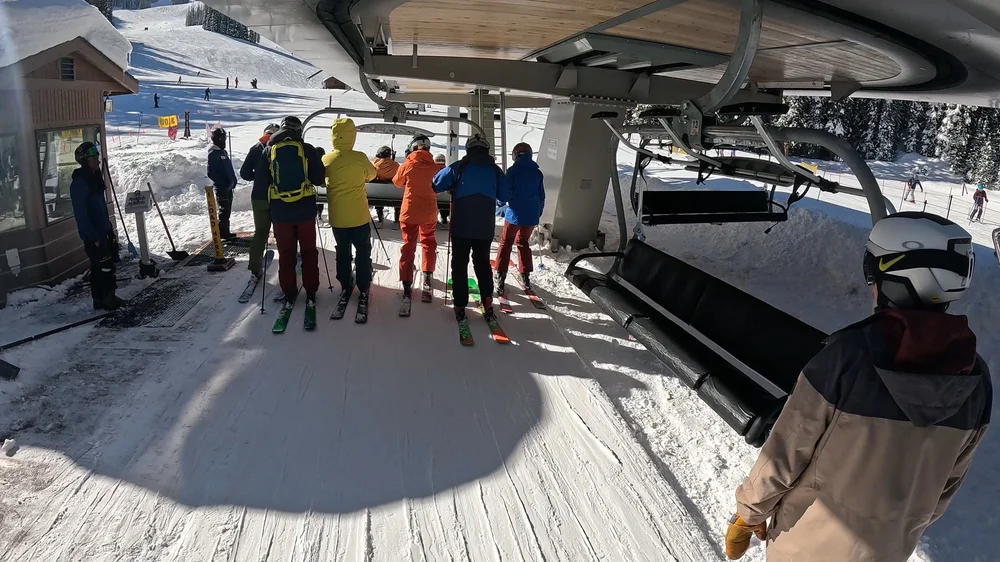
What This Means for the Skiing Public
Despite the legal drama, the fundamental ski experience isn’t expected to change dramatically for consumers—at least not immediately. A spokesperson for the NSAA, when asked if the Miller case would alter day-to-day operations, said that given the foundational importance of chairlifts, the “guest experience is unlikely to change significantly.”
Where skiers and riders might notice subtle changes is in how resorts manage risk on the margins. Ski areas could become more strict with operator training regiments or running lifts on days with inclement weather, perhaps choosing to err on the side of caution where in the past they might have previously pushed the envelope to keep guests happy. You might see more signage, announcements, and staff reminders about lift safety on your next ski trip, especially at Vail-owned resorts that will want to show that they are proactively encouraging safe ridership in the wake of all the PR here.
Perhaps the biggest change, especially if you are in Colorado, is to your legal rights. As a skier or rider, you’ve probably clicked past those liability waivers dozens of times without much thought. After Miller’s case, you should understand that those waivers are not absolute for the resorts anymore. If, in the unlikely event you or a companion are hurt due to a resort truly failing to adhere to safety rules, there may be legal recourse despite the paperwork you signed. That said, this doesn’t mean every injury at a ski area is suddenly a ticket to a lawsuit payday. The Colorado ruling was narrow: it allows claims when safety laws are broken, but it upheld waivers for ordinary mishaps and “inherent risks” of skiing or riding. So if you simply catch an edge and wipe out, or even if you misload a lift and the operator does everything right yet you fall, the waiver will likely still stop any claim you might make.
For the millions of skiers and riders likely to hit the slopes in the U.S. this winter, this case probably brings up a number of other questions. The first natural concern might be whether riding a chairlift at a resort like this is still safe. The reassuring news is that chairlift accidents like the one that injured Annie Miller remain exceedingly rare, and skiing overall is statistically very safe when it comes to lift transportation. It’s important to note the odds of being seriously injured on a ski lift are about 1 in 73 million rides—those are long odds, to say the least. Modern lifts are built and inspected to high standards, and serious malfunctions (like detachments or rollbacks) are uncommon. You’re far more likely to get injured from a bad fall on a ski run than from anything involving a lift.
The other area of concern for consumers might be cost and access. With such a big change to liability precedent, one might assume that insurance costs will go up, even if the circumstances aren’t as extreme as those in Oregon. And if insurance costs do rise for resorts, some of that expense may trickle down to ticket prices or season pass costs. But in our view, an insurance-driven price increase is unlikely, given the fact that incidents that aren’t directly a ski resort’s fault are still covered by liability waivers. However, we’ll have to wait and see if any insurers decide to pull out of Colorado in the coming years to know for sure.
Despite the array of headline-grabbing lift accidents, it’s important to note that these types of serious injuries are extremely rare (about 1 in 73 million).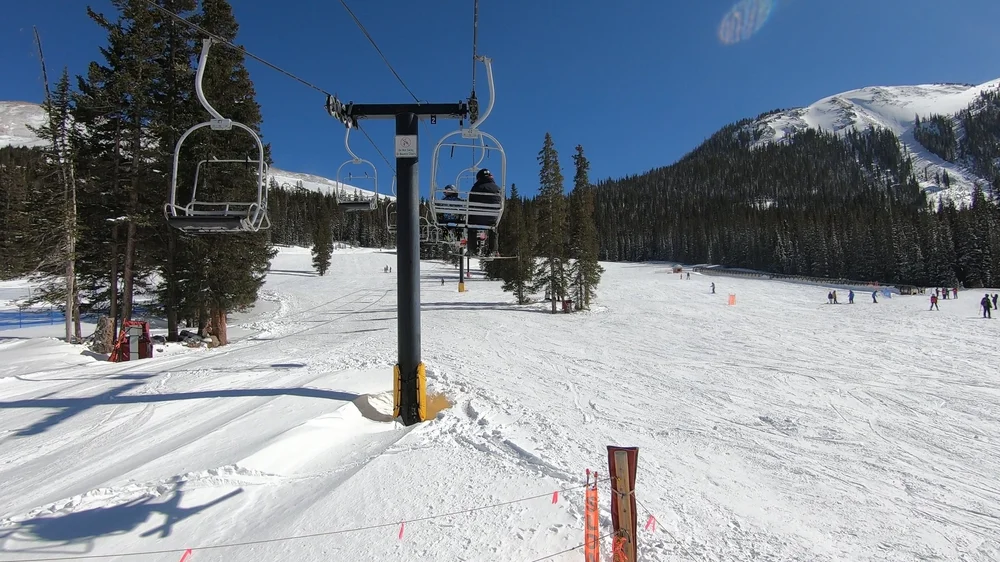
Should Vail Resorts Be Worried?
But where this ruling could have the biggest impact is in what it means for Vail Resorts’ bottom line over the coming years. Now let’s be clear, from a financial standpoint, a large company like Vail Resorts is not in existential danger from one verdict. Vail reported over $290 million in net profit in the most recent 12-month period, and a $12 million payout, while unwelcome, is recoverable for a corporation of that size. The bigger worry is that this is far from the only case related to lift negligence that Vail is currently grappling with, and in fact, the other ones that it is facing might be even more high profile and might be even more clearly their fault.
In December 2024, a chair on Heavenly’s Comet Express slid backward into another chair, injuring several riders and prompting a federal and state investigation. Then, in February 2025, a chair on the Flying Bear lift at Attitash actually detached from the cable and fell roughly twenty feet, sending a passenger to the hospital. Final investigation reports haven’t been released, but the early facts in both cases point toward mechanical or maintenance failures that, if confirmed, would almost certainly qualify as violations of tramway-safety regulations. That is exactly the kind of statutory breach that voids the protection of a standard liability waiver under the new Colorado precedent—and it would give plaintiffs a far clearer path to significant jury awards. While as far as we’re aware, plaintiffs in both of those cases were not as severely injured as Annie Miller was, the fact that there were several more people affected across those two cases does play a significant role in how much a potential jury award could be.
Vail Resorts faced two high-profile chairlift accidents in Heavenly (pictured) and Attitash last winter. It is quite possible the Crested Butte decision will be used as precedent for another multi-million dollar case. Source: xamfed | Reddit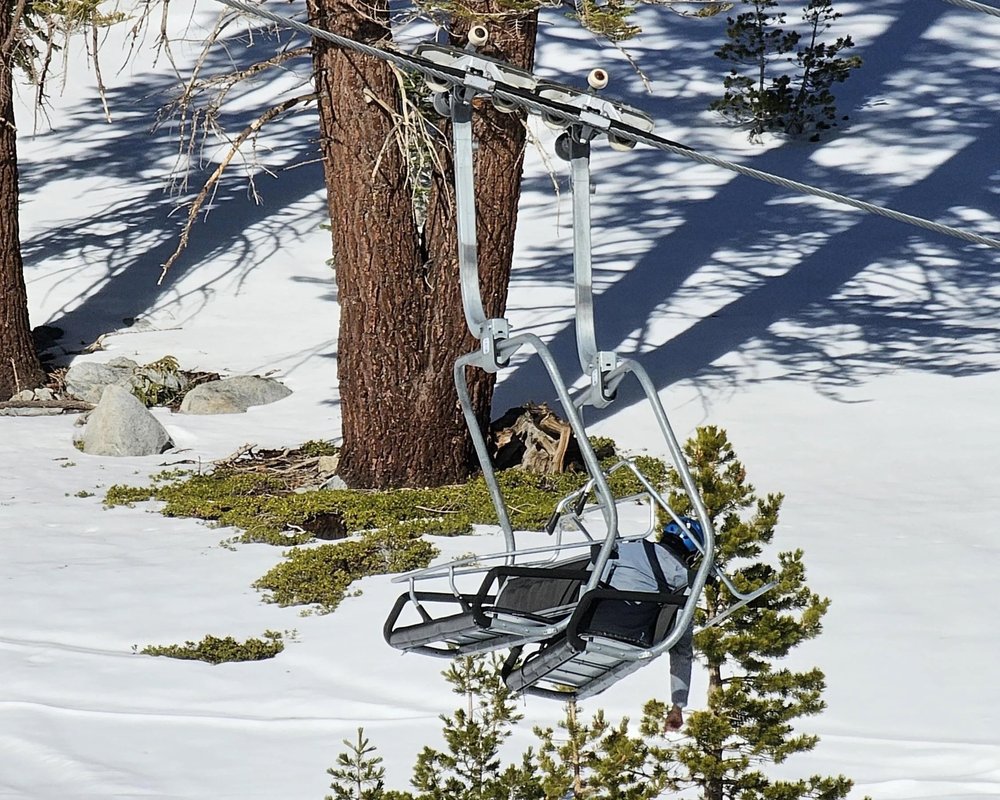
This comes at a time when Vail’s revenue growth has flattened and management has been focused on cost-cutting. Even though the company remains profitable, a string of verdicts in the $10-20 million range would begin to matter, especially if insurers respond by hiking premiums or pushing higher deductibles. The amounts Vail pays to settle or litigate lawsuits aren’t broken out as a public line item, but for a company that has spent years squeezing expenses—and had this circumstance come to head last year when Park City ski patrollers went on strike over a wage raise that probably would’ve amounted to a couple million dollars cumulatively at most—having to redirect tens of millions toward legal judgments is probably not what they want.
Despite all these less-than-ideal circumstances, Vail’s valuation could still hold up for a couple of reasons. The company recently reinstated longtime leader Rob Katz as CEO after parting ways with Kirsten Lynch, who was at the helm when all three lift incidents occurred. Public-company valuations hinge as much on investor confidence as on hard numbers, so if Katz convincingly pivots the company toward aggressive lift maintenance and visibly safer operations—showing that accidents like these won’t happen again—market perception could improve and the stock could benefit. But the reverse is also true: if Vail continues to experience high-profile lift accidents, investor sentiment could sour. The Crested Butte case itself took roughly three years to wind through the courts, and any future Heavenly or Attitash lawsuits are likely to follow a similar multi-year timeline. Over that period, all eyes will be on Vail to prove that it truly has its safety house in order.
It’s also worth noting that Vail Resorts is far from the only lift operator that is likely going to face cases like this based off of the new precedent. In just the past three years, the following American ski resorts have had lift malfunctions that have resulted in injuries to patrons: Big Sky, Montana Snowbowl, Red Lodge, and Willamette Pass. The latter of these resorts is in Oregon, so it’s likely to face that much harsher liability environment specific to that state that we covered earlier, but the former three are in Montana, and while it’s important to note that the Colorado Supreme Court’s ruling is only binding in Colorado, we wouldn’t be surprised to see that state’s courts adopt a similar legal framework to Colorado’s. We might see new lawsuits or the revival of old ones in other states testing the waters. It’s unclear which of these incidents were caused by negligence on the operators part, if any, but don’t be surprised if some of these cases reach high-profile resolutions in the not so distant future.
Vail Resorts won’t collapse from this verdict, but it’s clear that the next few years could spell trouble—especially with two additional incidents that could potentially work its way through the legal system.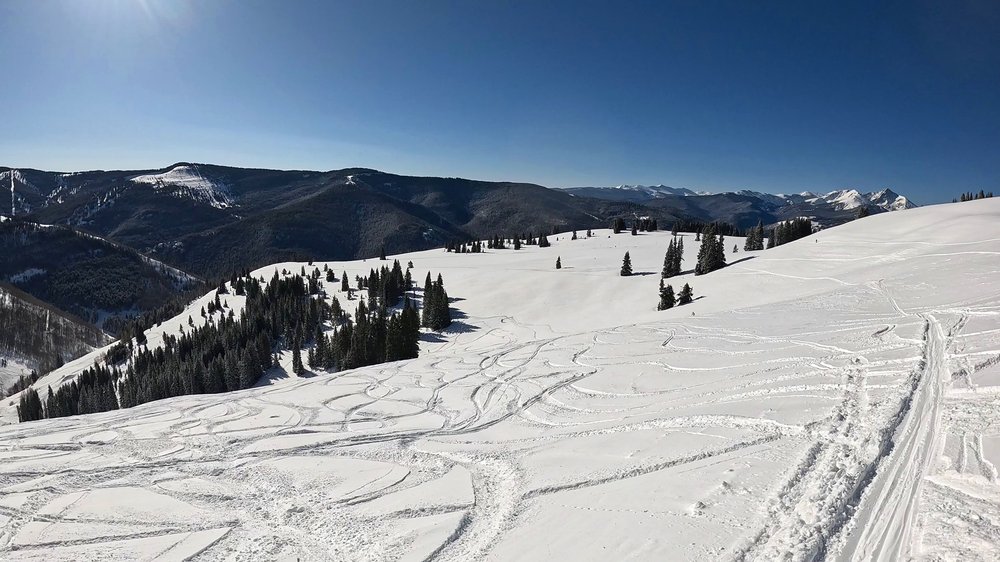
Final Thoughts
So no, Vail Resorts isn’t going to collapse from this multi-million dollar verdict. But the next two years for Vail Resorts could be pivotal. Colorado’s Supreme Court has set new precedent for how negligence per se is treated at ski resorts, and with Vail still facing at least two additional incidents that could presumably involve negligence from an operational perspective, the way these are handled could significantly impact the future of Vail Resorts, plus the American ski industry as a whole.
When it comes to the impact for skiers and riders, the decision in this case delivers a clear and important message: ski resorts are not above the law when it comes to basic safety. For decades, the balance of power was tilted such that injured guests had virtually no chance in court, even if a resort blatantly failed to adhere to safety rules. Now, at least in one state, that balance has been adjusted. Ski areas remain shielded from frivolous claims—you still can’t sue just because you hit a tree or took a tumble off a cliff—but they can no longer hide entirely behind the fine print of liability waivers if they themselves create dangerous conditions by violating safety requirements.
What do you think about this development? Anything that you’re worried about in terms of the implications? Let us know in the comments below.


